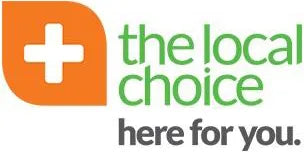Tomato Passata is a smooth, sieved tomato purée made from ripe, peeled tomatoes that have been cooked briefly and strained to remove seeds and skins. It has a rich, fresh tomato flavor and a velvety texture, making it a versatile base for sauces, soups, and stews. Common in Italian cooking, passata is often seasoned simply with salt and sometimes basil, allowing it to serve as a clean canvas for a wide variety of dishes.
Get free shipping on all orders above R550. *South Africa Only
All our ingredients are non-GMO, sustainably sourced and natural
Hundreds of fascinating articles on solving different health problems.
Sign up to our newsletter for weekly specials and vouchers

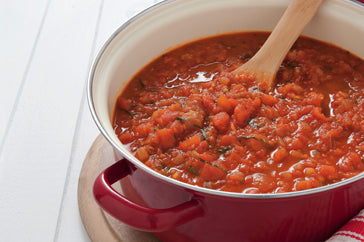
Delicious & Healthy Recipes
Tomato Passata
Ingredients
It is used as the basis of many sauces or included in dishes, often as a salad accompaniment.
Tomato Passata is made from the glut of sun-ripened tomatoes that reach perfection at the height of summer. Nothing is wasted. The sauce is bottled or placed into large jars and kept until needed. Here is a simple Tomato Passata recipe, a lovely way for you to enjoy all your hard work and loving attention!
Ingredients:
2.5kg tomatoes, washed with imperfections removed
1 medium bunch of fresh basil
1 whole onion, finely chopped
A generous drizzle of Olive oil
4 cloves of garlic
* Optional – 2 roasted peppers, skins removed, pulp the flesh.
2 tspns Sea salt
Instructions
Method:
Add your tomatoes to a large heavy based pan, the bigger the better.
Using a potato masher, break up some of the tomatoes to release the juice. Do not add water. The passata is best when only the juice and essence is used.
Bring the tomatoes to the boil, stirring all the time to prevent the tomatoes at the base of the pan from burning. Then turn down to a simmer and leave for one hour to reduce.
When you are satisfied that the tomatoes have broken down sufficiently, take off the heat and allow to cool.
When cool, pass the resulting tomato pulp through a sieve and the back of a large spoon.
Cover the base of the large pan in olive oil and add the onion, finely chopped, and the garlic. If you wish, you can add the pulp from roasted peppers to give the tomato passata an alternative taste.
When the onions are translucent, pour in the tomato passata, add salt and fresh basil to taste.
Bring to the boil and then turn to a simmer until your tomato passata has reached a thickness that you like.
Spoon your cooled tomato passata into the jars and seal tightly when completely cool.
Health Benefits
December 09, 2021
More recipes

Food – by Freda Coetzee
7 Snacks That Help Lose Weight
Is it possible that there are snacks that help lose weight? Some people say that snacking between meals only causes us to overshoot our daily calorie allowance, but is that actually true? This might be true when these “snacks” are actually just big meals… or if these snacks are all sorts of unhealthy things. But there are snacks that help lose weight. How do we snack healthy that will help lose weight? The first step is to make your meals a bit smaller – and healthier! After this, plan healthy snacks between your meals that will help you get from one meal to the next without becoming too hungry. To make this process easier, try planning your meals ahead of time so that you don’t grab the most convenient unhealthy snack you can find. This will also help to make sure that you stay within your daily calorie limit. Here are the best snacks that help lose weight… Trail Mix You can buy a pre-mixed pack or make your own by mixing dried fruit, raisins, nuts, and seeds and putting it into a snack-size serving to take along with you wherever you go. Nuts and seeds have been seen to promote weight loss and are full of nutrients. Almonds are your best bet, followed closely by pistachios. Just don’t eat too much, as they are high in fat. When buying pre-mixed packs, make sure it is not filled with sugar and other nasties. When buying pre-mixed packs, make sure it is not filled with sugar and other nasties. Baby Carrots and Hummus These are a healthy replacement for chip-and-dip. It is great for snacking while watching the game, or to eat at your desk while you are working. Yogurt With Berries Yogurts and berries are a great way to start the morning, and an even better way to finish a meal! They can be used as a healthy snack or a healthy dessert. Berries are also high in water and fiber, giving you a sense of fullness without adding too many calories. Apple and Peanut Butter This is an awesome sweet and crunchy snack that is packed with fiber and gives a great energy boost! Although peanut butter is high in calories, it has been shown to control hunger and increase weight loss. Just remember to use it in moderation. About 2 tablespoons should do the trick. Look for a natural peanut butter that is low in sugar and sodium. Whole-Grain Crackers & Cheese A few crackers with some good cheese or even low-fat cream cheese are a great snack. Make sure that you don’t overdo it since even whole-grain crackers can be quite high in calories. Healthy Energy Bar Energy bars are some of the easiest and most convenient snacks, but you have to make sure that you choose the right ones. Look for something made out of “real” ingredients like raisins and oats. Make sure that it does not exceed 150 calories, and also no more than 15g of sugar. Popcorn Air-popped popcorn, not the type that you get at the movie theatre, can be a great low-cal snack. Not only does it keep your tummy from rumbling, it actually contains a fair amount of fiber, as well as a little bit of protein. Get an extra edge with Manna Blood Sugar Support Even a small, healthy snack can cause your blood sugar levels to rise. And increased blood sugar levels mean more insulin in the bloodstream. And more insulin in the bloodstream more fat storage! So in order to prevent this from happening, simply take 1 Manna Blood Sugar Support tablet with your snack. This can help that your snack keeps you fuller for even longer, it gives you more sustainable energy, and also help prevent that “meh” feeling you get after snacking that we call a sugar crash. What is Manna Blood Sugar Support? The Manna Blood Sugar Support is an all-natural health supplement made from the pods of the Prosopis (Mesquite) tree, and it does not have any negative side effects like many chemical alternatives have. How does Manna Blood Sugar Support work? The Manna Blood Sugar Support supplement is the organic and natural way to help balance blood sugar levels. It does this by slow-releasing the sugar from the food we eat into our bloodstream. This means that it helps prevent the blood sugar levels from soaring through the roof after you have eaten something, and then also obviously helps avoid the subsequent sugar crash. This helps your body to avoid the need for the pick-me-up from a sugary snack that we know as a craving. If you can stabilize your blood sugar levels and avoid cravings, it makes losing weight a whole lot easier. When taken with food, Manna Blood Sugar Support gels with the food in the stomach to reduce the glycemic index of the food and drink you consume by up to 43%. It, therefore, helps to prevent blood sugar levels from rising too high. Manna Blood Sugar Support is uniquely formulated natural and organic supplement which helps Maintain balanced blood sugar levels, keeping you more satisfied after a meal, which means that the same meal can take you much further and help you to eat less, which can help with natural weight loss. Control cravings, helping you stay away from sweets and unhealthy food and lose weight easily.
Read more
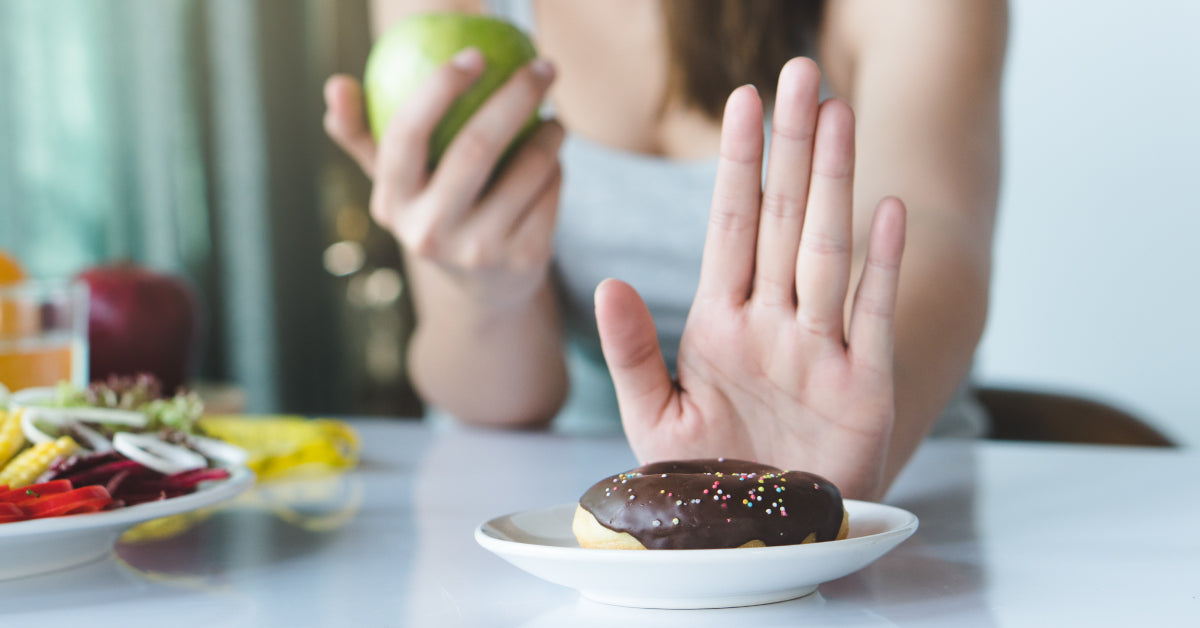
Food – by Freda Coetzee
How Carbs Are Making You Fat
You know that carbs are the reason you gain weight. You know that you should eat less of them. But still, you find it hard to say no to a creamy piece of chocolate cake or a big cheesy pizza. The fact of the matter is that it does not matter what carbs you eat, they are going to have the same effect. Some may have less of an effect, but if you do not watch your portions of these, they might cause just as much damage to your weight. But how do carbs make me gain weight? They body very quickly digests carbs and coverts them into blood glucose. After you eat any food with a lot of carbs, your blood sugar level goes up – this is when you feel a sugar high. Then your pancreas releases a lot of insulin to balance out the excess sugar, which then causes the well-known sugar crash. But the body uses the sugar in the blood stream as its main source of energy. But I thought it was fat that makes me fat? Well no. Fat does not make you fat, sugar does. When the cycle explained above keeps taking place, the body stores all the unused energy in the blood stream as fat. At about 90 minutes after eating your meal, your blood sugar returns to normal. However, your insulin levels still remain high. This means that your body still keeps storing fat. When we take this into account, we can understand why it is not eating fat that makes us fat, but rather eating carbs. Fat does not cause your blood sugar level to go up, which then also means that it does not cause your insulin levels to go up. This can lead to insulin resistance… When you eat carbs almost every day, this process happens over and over again. When this keeps happening, the insulin produced by the pancreas becomes less and less effective. Eventually, it impairs the brain’s ability to detect when you feel full. This then leads to constant overeating and still feeling hungry. Which makes you eat more, and so a vicious cycle begins. Cutting carbs to lose weight: So now you have realized that you should lose a few kilograms, but what do you do? You think that you are eating healthy, but in reality, your diet may still be packed with sugar and carbs. There are two ways to cut your body’s glucose supply and start losing weight 1. You can starve. This is what low-calorie, low-fat dieting is. 2. You can reduce the starches and sugars. These are the main sources of glucose The second approach has two big advantages over the low-calorie diet… Firstly, you don’t have to go hungry and starve yourself.Secondly, because you are not giving your body an overload of sugar to use as energy, it has to find another source. This means it then uses the fat stored in your body. When you eat carbs, you limit your body’s capacity to use fat. When your blood sugar goes up and insulin is released, it prevents your body from burning fat. Because one of the main functions of insulin is to store unused energy as fat, it is actually doing the opposite of what you are trying to achieve. What is the best way to tackle Weight Loss? The Manna Weight Loss program in the Free Manna Free Manna Diet e-book is a low carbohydrate, Low GI diet which already helped thousands of people to lose weight the healthy way. The Manna Low GI Shake is ranked as one of the best products to curb food and sugar cravings and to help the body to require less insulin. The Shake is available in 3 delicious flavours and you can replace 1 to 2 meals per day for effective and healthy weight loss. Our NEW Manna Low GI Shake is formulated to allow you to skip a meal without losing the needed nutrients and energy, helping you lose weight in an easy and effective way. It also helps manage your blood sugar levels. The NEW Manna Low GI Shake comprises of 6 ingredients which are high in fiber, protein, and minerals like calcium, magnesium and potassium. Our shake has been proven to help curb food cravings, suppress appetite, and satisfy you for longer. It couldn’t be easier to lose weight. All you do is choose your favourite flavour of Manna Low GI Shake, add it to milk, water or juice, mix it and there you have a healthy meal in a glass. As simple as that! We don’t use any artificial sweeteners or preservatives. The new Shake is gluten-free, lactose-free, Non-GMO, soy-free. Also, the shake is suitable for Vegan’s, Vegetarians and Diabetics.
Read more
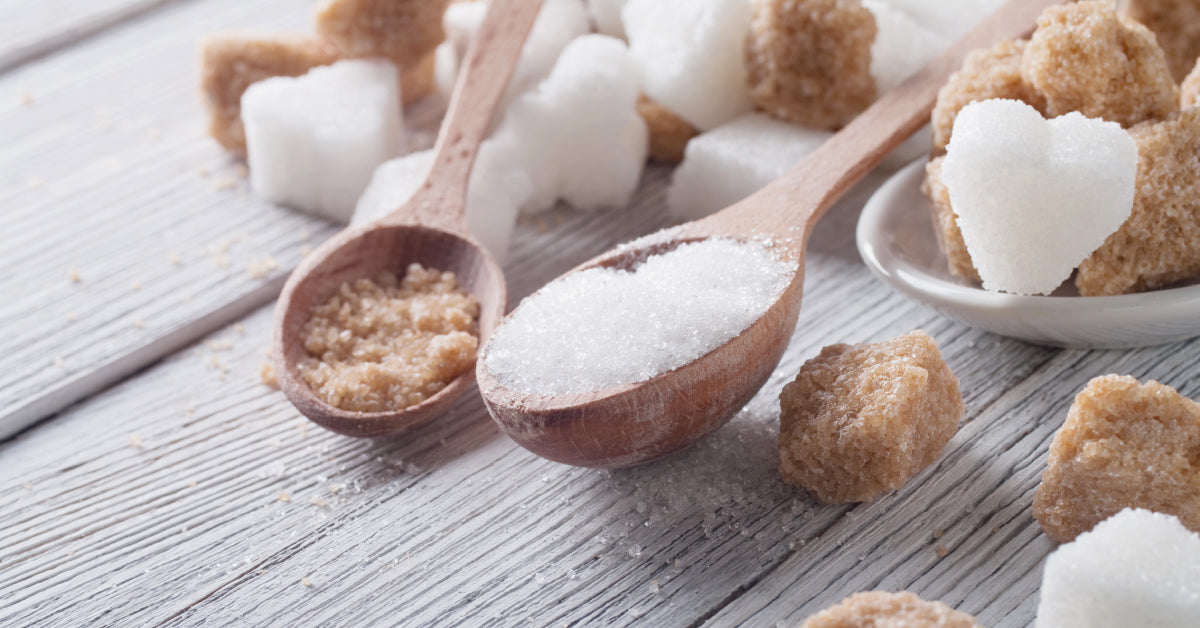
Food – by Freda Coetzee
4 Tips to Reduce Sugar Intake for Better Blood Pressure
Various studies agree that a high sugar intake can have a negative effect on your blood pressure and cholesterol. But this is not something that is very commonly known. Whilst many people know that high blood pressure and cholesterol is dangerous, very few people understand the big role that sugar plays in worsening this problem. So we will be looking at tips to reduce sugar intake for better blood pressure. 4 Tips to reduce your sugar intake for better blood pressure: It can be easier said than done, but with the right advice and attitude you can control the amount of sugar you eat every day, and in doing so lower your high blood pressure. Here are four easy tips to help you watch your sugar intake: Beware of Hidden Sugar Something called high fructose corn sugar is often used in processed foods. The trick is it can even be in food that does not taste sweet. It is a corn-based sweetener used in anything from sugary soft drinks, to tomato sauce and crackers. Studies have been able to directly link an increase in high blood pressure due to the high sugar intake from eating too much high fructose corn syrup. Use Natural Sweeteners You don’t have to use refined sugar to sweeten your food; there are plenty of sweeteners straight from nature. You can use juices from grapes, pears, peaches, oranges, and other fruits to add sweetness and also flavor to the food that you make. You can also opt for things like dried apples, raisins, dates, and coconuts which can be used in many different dishes to add texture and sweetness whilst not severely increasing the sugar content. To season foods, especially desserts, use things like cloves, nutmeg, and cinnamon. If you are looking for a direct replacement for sugar, you get natural, healthy sweeteners like Stevia which offer a sweet taste with no actual sugar. Eat Less, More Often It is a common misconception that you should eat a big meal so that you can stay fuller for longer, but the truth is that this can have devastating negative effects on your blood sugar level as well as your blood pressure. It’s much better to eat more often – about 4 to 6 times a day – but eat smaller, healthy portions. It will help prevent you from getting cravings or becoming hungry between meals, which often cause you to overeat at your next meal. It is also best that you stay away from dessert and other sweet things as much as possible, but when you do have them, make sure that you control yourself and enjoy them within your limits. Go Slow On The Alcoholic Beverages Beer, wine, and liquor are actually very high in sugar. This is due to the alcohol content, which is basically just another form of sugar – even though it does not always taste sweet. Limit yourself to only drinking alcohol over the weekends, and even then make sure not to have more than one or two drinks.
Read more

Food – by Freda Coetzee
3 Diet Tips to Prevent Heart Disease
The incidence of obesity continues unabated at epidemic levels as people suffer from a wide array of degenerative diseases including heart disease which kills more people than any other affliction. New researched showed that westerners consumed 331 more calories a day in 2013 compared to thirty years ago. Those additional calories translate to an additional 2,317 added calories each week which packs on roughly 15kg of deadly body fat each year. Luckily there are diet tips to prevent heart disease. Excess Body Weight Directly Leads to Heart Disease The risk of heart disease rises in direct proportion to weight gain. The results of a study in the European Heart Journal conclude that even moderate increases in weight are strongly associated with increased risk of coronary death and heart attack. In fact, a 5% increase in body weight is enough to tip the scales toward cardiovascular disease in large part due to the metabolic response of chemical messengers released by stored fat and lipid dysfunction. The body has an amazing capacity to heal itself and reverse the negative effects of a lifetime of poor dietary habits, as any amount of weight loss will slowly bring about disease reversal and lower the risk of suffering a cardiac event. You can incorporate the following healthy tips into your lifestyle to assist weight loss and prevent heart disease. Tip 1: Increase Dietary Calcium to Boost Weight Loss Efforts The results of a study published in the American Journal of Clinical Nutrition shows that those individuals with the highest intake of calcium from dairy products experienced an average 5kg weight loss over a 2 year period. Study participants consumed 600 mg of calcium from dairy sources which is equivalent to a 350ml glass of milk. It’s important to note that the calcium did not come from supplements which are difficult for the body to absorb. Be sure to supplement with Vitamin K which helps usher calcium out of the blood so it doesn’t become deadly heart clogging plaque. Tip 2: Supplement with Vitamin D to Reduce Inflammation This study also found that as weight increased, levels of Vitamin D circulating in the blood were reduced. This is because Vitamin D becomes stored in body fat, and excess fat means that more Vitamin D is locked away and unavailable to perform critical anti-inflammatory and immune system functions. Vitamin D is a catalyst in the weight loss process as it reduces inflammation caused by excess fat and helps to inhibit the release of chemical messengers such as cortisol which keep you from losing weight. Vitamin D deficiency is implicated in the dramatic rise in coronary artery disease, as it has been shown to lower blood pressure and stabilize plaque so it doesn’t rupture. Tip 3: Stabilize Blood Sugar through Natural Diet Blood sugar spikes caused by a diet high in processed carbohydrates leads to obesity and heart disease. Wild changes in blood sugar after every meal cause metabolic imbalance and high levels of triglycerides in the blood which the body must convert to fat for storage. You can get off this roller coaster and begin to see quick weight loss results by slowly cutting refined carbs from your diet. If your food comes in a cardboard box, can or other man made container, it shouldn’t be part of your diet. Eat plenty of vegetables, nuts, seeds and lean proteins in their natural form to keep blood sugar under control. You can reverse plaque which has been slowly developing in your arteries over the course of decades, as you watch those excess pounds disappear. The incidence of obesity continues unabated at epidemic levels as people suffer from a wide array of degenerative diseases including heart disease which kills more people than any other affliction. New researched showed that westerners consumed 331 more calories a day in 2013 compared to thirty years ago. Those additional calories translate to an additional 2,317 added calories each week which packs on roughly 15kg of deadly body fat each year. Luckily there are diet tips to prevent heart disease. Excess Body Weight Directly Leads to Heart Disease The risk of heart disease rises in direct proportion to weight gain. The results of a study in the European Heart Journal conclude that even moderate increases in weight are strongly associated with increased risk of coronary death and heart attack. In fact, a 5% increase in body weight is enough to tip the scales toward cardiovascular disease in large part due to the metabolic response of chemical messengers released by stored fat and lipid dysfunction. The body has an amazing capacity to heal itself and reverse the negative effects of a lifetime of poor dietary habits, as any amount of weight loss will slowly bring about disease reversal and lower the risk of suffering a cardiac event. You can incorporate the following healthy tips into your lifestyle to assist weight loss and prevent heart disease. Tip 1: Increase Dietary Calcium to Boost Weight Loss Efforts The results of a study published in the American Journal of Clinical Nutrition shows that those individuals with the highest intake of calcium from dairy products experienced an average 5kg weight loss over a 2 year period. Study participants consumed 600 mg of calcium from dairy sources which is equivalent to a 350ml glass of milk. It’s important to note that the calcium did not come from supplements which are difficult for the body to absorb. Be sure to supplement with Vitamin K which helps usher calcium out of the blood so it doesn’t become deadly heart clogging plaque. Tip 2: Supplement with Vitamin D to Reduce Inflammation This study also found that as weight increased, levels of Vitamin D circulating in the blood were reduced. This is because Vitamin D becomes stored in body fat, and excess fat means that more Vitamin D is locked away and unavailable to perform critical anti-inflammatory and immune system functions. Vitamin D is a catalyst in the weight loss process as it reduces inflammation caused by excess fat and helps to inhibit the release of chemical messengers such as cortisol which keep you from losing weight. Vitamin D deficiency is implicated in the dramatic rise in coronary artery disease, as it has been shown to lower blood pressure and stabilize plaque so it doesn’t rupture. Tip 3: Stabilize Blood Sugar through Natural Diet Blood sugar spikes caused by a diet high in processed carbohydrates leads to obesity and heart disease. Wild changes in blood sugar after every meal cause metabolic imbalance and high levels of triglycerides in the blood which the body must convert to fat for storage. You can get off this roller coaster and begin to see quick weight loss results by slowly cutting refined carbs from your diet. If your food comes in a cardboard box, can or other man made container, it shouldn’t be part of your diet. Eat plenty of vegetables, nuts, seeds and lean proteins in their natural form to keep blood sugar under control. You can reverse plaque which has been slowly developing in your arteries over the course of decades, as you watch those excess pounds disappear.
Read more

Food – by Freda Coetzee
How to Meal-Prep For Weight Loss
We don’t seem to realize what a powerful tool meal-prep is for weight loss. If meal-prep for weight loss is done right, it can help free up a good couple of hours a week and can also make chasing weight loss goals a heck of a lot easier. But how do we meal-prep for weight loss? In order to make meal-prep a success, some structure is needed… Here are 8 great tips that will turn anybody into a pro: 1. Don’t be lazy Get up and do your meal prep. It might feel like a lot of work now, but you will thank yourself tomorrow – and the rest of the week. It doesn’t take much longer to do meal prep for the week than it does to cook a single healthy meal. SO JUST GET UP AND DOOOOO IT! 2. Go to the shop prepared Make sure that you have a clear-cut list of what you need. Don’t forget to buy everything that is on your list, and don’t buy anything that’s not on your list. And NEVER shop while you are hungry! 3. Simplify cooking Read through your recipe before you start. This will help you plan how to make the most effective use of your time, with the least effort and the least dishes. Also, make sure that everything is ready when to use when you need it. Meaning that everything that needs to be defrosted is defrosted, and everything that needs to be chopped is chopped by the time that you need it. 4. Prepare your meals ahead of time Where possible, prepare the entire meal and store it in the needed portions. Otherwise, prepare all the parts that can be prepared in order to make it easier when it comes to eating the meal. 5. Keep the fridge clean Make sure that you don’t have other unnecessary leftovers or food in the fridge. Especially unhealthy food… This makes it easier to avoid clutter and just focus on what you have prepared. 6. Include everybody in the plan Make sure everybody in the house is on the same page. This can help you avoid eating each other’s food and make sure that everyone is happy with what’s on the menu. This is especially important when you have young children or picky eaters. 7. Prepare for Distractions Distractions happen. Think of it this way… You are spending one hour to prepare food for 5 days. That means you save 4 hours per week with meal prep. However, if you don’t focus and dedicate this hour to your meal prep, it might take you 5 hours to get it done in any case! 8. Don’t be too hard on yourself While meal prep is there to help add structure and ease your lifestyle, don’t beat yourself up if you don’t get it right all the time. Just don’t start making up excuses to avoid meal prep and get takeout. Great! Now that you’ve got a handle on meal prep, it’s time for the next step to a healthier, skinnier you. And what is this step? Well, when you eat any of these delicious meals you have prepared, make SURE that you are taking a 1 or 2 Manna Blood Sugar Support tablets to keep your blood sugar levels balanced in order to get the maximum benefit out of your meal. What is Manna Blood Sugar Support? The Manna Blood Sugar Support is an all-natural health supplement made from the pods of the Prosopis (Mesquite) tree, and it does not have any negative side effects like many chemical alternatives have. How does Manna Blood Sugar Support work for weight loss? The Manna Blood Sugar Support supplement is the organic and natural way to help balance blood sugar levels. It does this by slow-releasing the sugar from the food we eat into our bloodstream. This means that it helps prevent the blood sugar levels from soaring through the roof after you have eaten something, and then also obviously helps avoid the subsequent sugar crash. This helps your body to avoid the need for the pick-me-up from a sugary snack that we know as a craving. If you can stabilize your blood sugar levels and avoid cravings, it makes losing weight a whole lot easier. When taken with food, Manna Blood Sugar Support gels with the food in the stomach to reduce the glycemic index of the food and drink you consume by up to 43%. It, therefore, helps to prevent blood sugar levels from rising too high. Manna Blood Sugar Support is uniquely formulated natural and organic supplement which helps Maintain balanced blood sugar levels, keeping you more satisfied after a meal, which means that the same meal can take you much further and help you to eat less, which can help with natural weight loss. Control cravings, helping you stay away from sweets and unhealthy food and lose weight easily.
Read more

Food – by Freda Coetzee
How to Cut Down on Sugar Easily for Weight Loss
Weight loss can be a struggle at the best of times, but a love for sugar can make it all the more so. The problem is that sugar has become such a big part of our daily diets that we don’t even notice which foods contain it and which foods don’t, making weight loss difficult. Many people are under the impression that you have to cut sugar out completely, but this is not necessarily the case. Just cutting back on your sugar consumption can go a long way. The thing with cutting down on sugar is that it is often easier said than done. Here are 6 simple steps to help you in your weight-loss quest… Step 1: Read food labels for sugar content. The nutritional table on food labels is your friend. An easy way to choose your food is to look for the ones with less than 10 g of sugar per 100 g. Also be wary of the other names for sugar, like sucrose, maltose, and dextrose. Step 2: Reduce your sugar consumption gradually. It is better to ease yourself into the habit of eating less sugar than it is to give it all up at once. Try cutting the amount of sugar that you put into food and drinks by half, as this will give your taste buds and brain the chance to adapt to things being less sweet. Step 3: Steer clear of sugary soft drinks and fruit juices. Usually, we focus so much on what we eat that we completely neglect what we drink. Soft drinks and fruit juices can be extremely high in sugar, and can sometimes have the same calorie count as an entire meal! Make sure that you cut back on these types of beverages. Step 4: Swap your cereal for oatmeal. Cereals are usually packed with added sugar and often do not contain as much Fiber as they claim. A better breakfast option is a bowl of hot oatmeal, which is lower in sugar higher in Fiber. If you want something sweet, combine it with a fresh fruit in the morning. Step 5: Eat low-calorie snacks. Snacks are an important part of a weight-loss diet, as they help you get from one meal to the next without getting hungry. It is important to make sure that they are as healthy and as low in calories as possible. Make sure that you plan ahead and pack your snacks for the day so that you don’t need to grab a high-sugar snack during the day as you become hungry or need energy. Step 6: Reduce sugar in recipes. Try cutting back on the sugar in your food by swapping it out for things like applesauce and sweetness-enhancing spices like cinnamon, nutmeg, and apple pie spice. Recommendation Try to follow the Manna Diet in the free e-book. This program can help to reduce blood sugar levels and insulin levels, which increase your cells insulin sensitivity to release stored fat as energy. This process encourages fat burning and healthy weight loss. Take the Manna Blood Sugar Support caplets with each meal to stabilize blood sugar levels, as well as lower insulin levels. It helps to do this by slow-releasing the sugar from the food we eat. As soon as this happens, cravings are eliminated because we do not get sugar spikes and crashes. Supplement to help with reducing insulin levels, suppressing appetite and curbing cravings The Manna Blood Sugar Support is an organic dietary supplement which can help to control blood sugar levels, suppress appetite and curb food cravings the natural way without any side effects. This product helps to reduce the glycemic index of anything you eat by up to 43%. By controlling blood sugar levels, the insulin levels also decrease, which prevents fat the fat storing action. Stop the Cravings with Manna Blood Sugar Support Reverses insulin resistance. It helps to normalize blood sugar levels. Helps to retard the uptake of glucose. Assist the body to require less insulin. Keep your energy level high.
Read more

Food – by Freda Coetzee
How to Lose Weight Without Constant Hunger
It is terribly hard to lose weight while constantly feeling hungry. So how can we cut calories, but stay full? Taking in fewer calories is always part of any weight loss effort. The problem is, this can leave us feeling hungry. In some cases, it might actually just be that we can’t distinguish between hunger and boredom. Either way, if we want to be able to lose weight and keep it off in the long-run, we have to learn how to control our hunger. Let’s see how you can do just that… Tip 1: Track your food consumption This helps you identify when and at what times you usually feel hungry. It can also help you spot certain triggers that may cause you to feel the need to eat, as well as triggers that cause you to eat more than you should. Tip 2: Don’t skip breakfast Eat a nutritious breakfast that includes protein, dairy or whole grains. This will help to satisfy your hunger as soon as you wake up. Eating a healthy and balanced breakfast prevents you from becoming hungry later in the morning. This means that you don’t start snacking at 10 am, and it also prevents overeating when it comes to lunchtime. Tip 3: Stack up your veggies Make sure that at least half of your dinner and lunch plate consists of veggies or salad. This helps you to feel fuller while taking in fewer calories. Tip 4: Choose healthy snacks Snacking between meals is not always a bad thing. As long as you stay away from the processed, sugary, and refined snacks and rather go for healthy options. A good, balanced snack can help to fend off hunger between meals, and also help you to eat less when it is time for your next meal. Tip 5: Meal planning Pre-packing healthy meals in their correct portion sizes can be a lifesaver when it comes to losing weight. It means that you don’t have to think about your portion size or calorie count for each meal that you have. It can also help you save time during the day. Alternatively, you can go use a good meal replacement shake, like the Tip 6: Stop eating when you are full Most of us make the mistake of finishing our plate of food even when we feel that we have had enough about halfway through it. Start by dishing up a smaller portion. Next, begin to eat more slowly while focusing on your hunger. This will help you realize when you have had enough, and then STOP, even if there is still food on your plate. Tip 7: Fibre and protein Fibre and protein are filling foods that can keep you feeling fuller for longer. Replace some of your carbs with more of these in order to reduce your chances of feeling hungry shortly after eating. Tip 8: Stay hydrated Make sure to drink enough water throughout the day to keep your body hydrated. A lot of the time we think we are hungry when in fact we are just thirsty. It will also help you to feel fuller. Tip 9: Manna Blood Sugar Support For an easy-to-follow guide, get the FREE Manna Diet e-book. Also, take the Manna Blood Sugar Support supplement with each meal to keep you fuller for longer, curb cravings and suppress appetite in the most natural way. What is Manna Blood Sugar Support? The Manna Blood Sugar Support is an all-natural health supplement made from the pods of the Prosopis (Mesquite) tree, and it does not have any negative side effects like many chemical alternatives have. How does Manna Blood Sugar Support work? The Manna Blood Sugar Support supplement is the organic and natural way to help balance blood sugar levels. It does this by slow-releasing the sugar from the food we eat into our bloodstream. This means that it helps prevent the blood sugar levels from soaring through the roof after you have eaten something, and then also obviously helps avoid the subsequent sugar crash. This helps your body to avoid the need for the pick-me-up from a sugary snack that we know as a craving. If you can stabilize your blood sugar levels and avoid cravings, it makes losing weight a whole lot easier. When taken with food, Manna Blood Sugar Support gels with the food in the stomach to reduce the glycemic index of the food and drink you consume by up to 43%. It, therefore, helps to prevent blood sugar levels from rising too high. Manna Blood Sugar Support is uniquely formulated natural and organic supplement which helps Maintain balanced blood sugar levels, keeping you more satisfied after a meal, which means that the same meal can take you much further and help you to eat less, which can help with natural weight loss. Control cravings, helping you stay away from sweets and unhealthy food and lose weight easily.
Read more
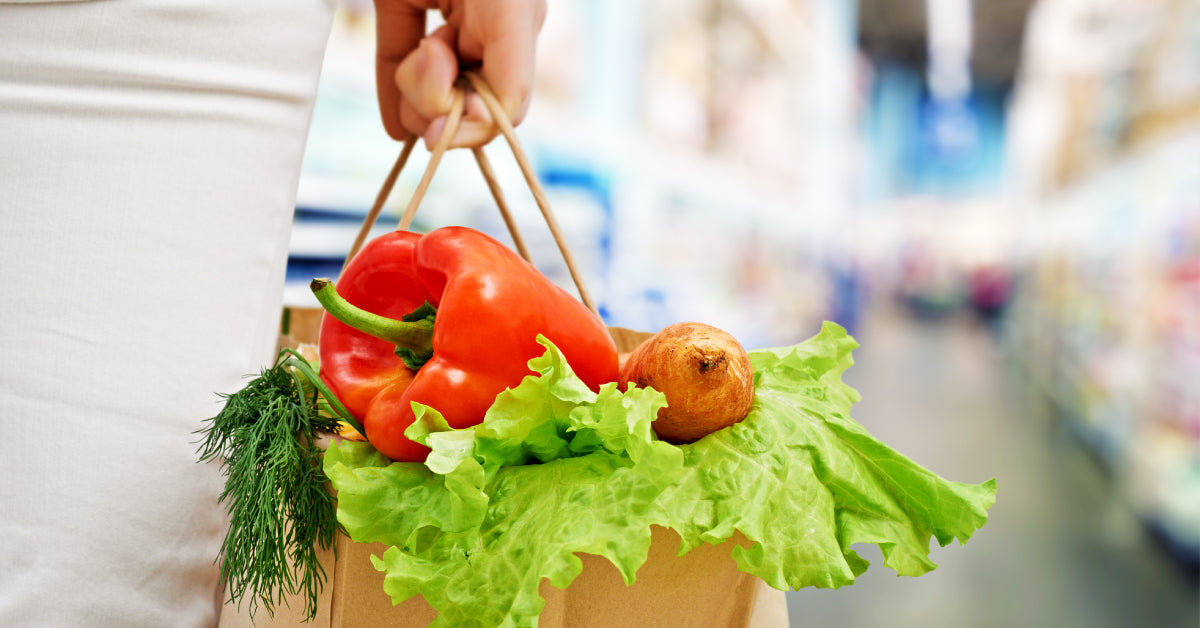
Food – by Freda Coetzee
What’s in your shopping bag?
Nutrition secrets hidden in your daily shopping bags You know you need to eat healthy food, but what is healthy food? More importantly, what is unhealthy food? These days there are so many different products to choose from, each claiming to be better or healthier than the next. So how can you make sure that you’re truly getting what you pay for? It basically comes down to reading (and understanding) your food labels. You need to make sure that you’re choosing food with the right ingredients and the nutritional content that meets your needs. Don’t just go for the one that says “low-fat” or “sugar free” – take the time to make sure that its contents supports its advertising. How to read a nutrition label It might seem simple enough, but companies often try and trick you into thinking their products are healthier than they actually are. Here are 7 tips for reading food labels like a pro… 1. Serving Size Almost all products give the nutritional information per 100g or 100ml, but how does that relate to the actual serving size? – Or to the entire product size, for that matter? Although it makes it easier to compare products based on 100g or 100ml information, always keep in mind how much you’ll actually be consuming. 2. Calories and calories from fat This is the energy content of the product and how much of that energy comes from fat. It’s often shown as kilojoules rather than calories. This is what you’ll need to use in order to decide whether something is truly high- or low-fat. Please note that fat is not always a bad thing. It might be that the fat comes from unsaturated fats, which are very beneficial to you. To determine which fat it is, you’ll need to study the label further… 3. Nutrients Nutrients refer to the amount of fats, carbohydrates, protein, sodium and fiber in the product. Fats – Fats are listed as: Total fats Saturated fats Trans fats Cholesterol Look for products with less than 10g of fat per 100g – ideally with less than 3g from saturated fat and minimal to no trans fats. Some products may also list other types of fats such as healthy omega 3s. Carbohydrates – Total carbohydrates and sugar content: Look for products with less than 10g of sugar per 100g serving if possible, although if the product contains fruit this is likely to be difficult. In this case aim for 20g or less. Protein – This is the total protein content or protein content per 100g/100ml Fibre – For carbohydrate based products such as cereals and bread look for more than 3g of fibre per serving. Sodium – Many processed foods contain a lot of sodium. Try to find products with less than 120mg of sodium per 100g for a healthy level of sodium intake. 4. Vitamins and Minerals Vitamin content like calcium, iron, vitamin A and vitamin C are mandatory on food labels. However, some companies include other vitamins and minerals like niacin, folic acid and/or other B vitamins if a product contains high amounts of these. 5. Percentage of daily requirements Along with the nutrient content, many labels also tell you how much of your daily requirements for these nutrients are found in a serving. Always make sure that you understand this section of the label: you want the good ingredients to be a high percentage of your daily requirement, but the bad ingredients to be a low percentage. 6. Nutrient claims When it comes to labels that say “low fat”, “high fibre” or “sugar free”; the product must meet certain criteria: Claim Fat-free Low fat Less fat Saturated fat free Cholesterol free Reduced calorie Low calorie Lean Light (fat) Light (calories) High-Fibre Sugar free Sodium/salt free Low sodium Requirement Less than 0.5g of fat per serving Less than 3g of fat per serving 25% less fat than a comparable product Less than 0.5g saturated fat and 0.5g trans-fatty acids per serving Less than 2mg of cholesterol, and less than 2g of saturated fat per serving 25% fewer calories per serving than comparable foods Less than 40 calories per serving Less than 10g fat, 4.5g saturated fat and 95mg of cholesterol per 100g 50% less fat than comparable food 1/3 fewer calories than comparable foods 5g or more per serving Less than 0.5g sugar per serving Less than 5mg of sodium per serving Less than 140mg per serving 7. Ingredients All products are required to have a list of ingredients on the label. The label should start with the ingredient that is most abundant in the product and continues down to the ingredient which is least abundant. This is most useful if you are trying to avoid a certain ingredient such as gluten or corn syrup. A Guide to Good Food Labels: Whether you are trying to lose weight or just be more healthy, here is a guide to the labels you want to look out for… Fruits and vegetables All fresh fruit and vegetables are good choices. Choose the “no added salt and sugar” varieties of canned fruit and vegetables. Low GI foods are good for weight loss. Breads and Cereals 3g of fibre or more per serve less than 120g of sodium per serve Less than 10g sugar per 100g (20g if the product contains fruit) Choose multigrain or wholegrain varieties Choose untoasted muesli Drinks Don’t forget that drinks have calories as well. Find out which are the best weight loss drinks. Fats and oils Choose oils and spreads made from olive, canola, peanut, soy, sunflower or safflower. Dairy products (excluding cheese) less than 3g total fat per 100g less than 1.5g saturated fat per 100g Cheese Buy the variety with least fat and sodium per 100g. Meat, chicken, fish, nuts, legumes 10g total fat or less per 100g less than 3g of this of saturated fat less than 120mg sodium per 100g Choose no added salt varieties of tinned products Choose unsalted nuts Snacks and treat foods less than 145 calories per serving Compare products and choose those with the least saturated fats and sodium.
Read more
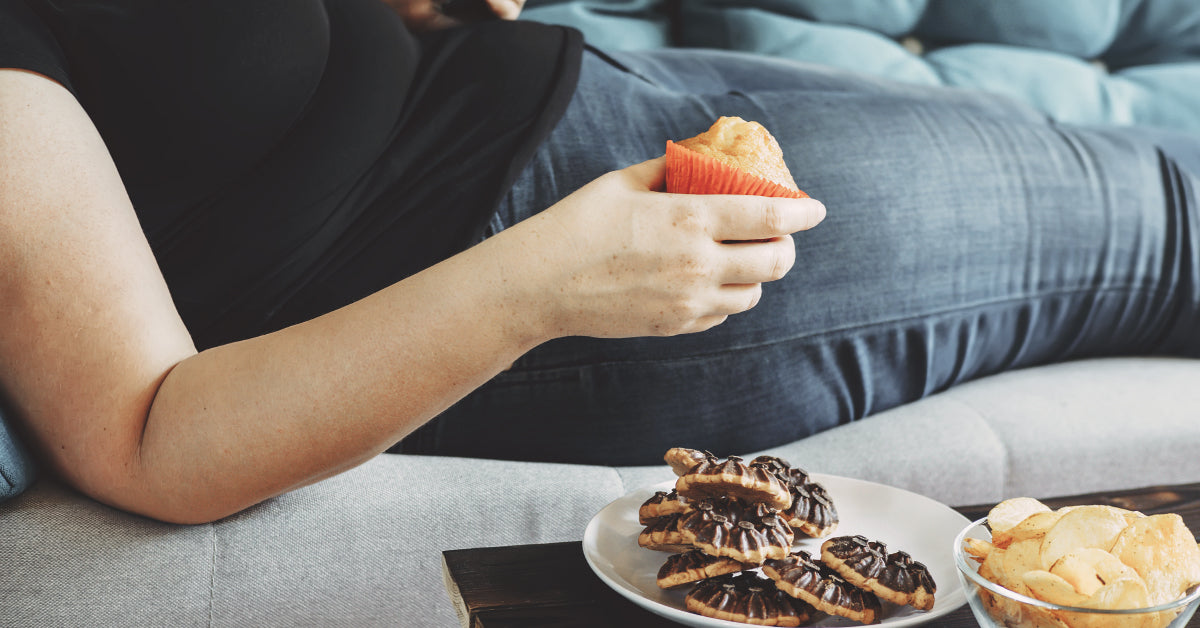
Food – by Freda Coetzee
3 Reasons Carbohydrates Causes Weight Gain
The common misconception that “fat makes you fat” has been well-proven to not be entirely true. Instead, research has shown that the real culprit behind weight-gain is carbohydrates. Carbohydrates are found in many of the foods that we eat on a daily basis. Carbs are found in all kinds of food that range from cereals, toast, jam, milk, yoghurt, granola bars and fruits, to things like bread, pizza, rice, potatoes and pasta. Too much carbohydrates can cause weight gain. Here are the 3 basic reasons why carbohydrates can cause weight gain… Increased Hunger It’s rather simple: Eating carbohydrates causes the body to release insulin, which removes the nutrients from the bloodstream since it expects more nutrients to arrive, which makes you feel as if the meal was not big enough and wanting more. Not feeling full usually ends up with you eating more food, and this is what causes weight gain. Carb Addiction Consuming carbs triggers the release of a brain chemical called serotonin, which improves the mood and causes a relaxing feeling since it reduces stress, anxiety, and pain. However, it is possible to become addicted to this serotonin release, which leaves you craving more and more carbohydrates in order to get that “feel-good” feeling. By eating more carbohydrates, you can increase your weight-gain. Fat Storage Eating carbohydrates cause the pancreas to release insulin which is a hormone that regulates the sugar in the bloodstream. Insulin dictates whether the sugar in the food we eat gets used for immediate energy or stored as fat for later use. When there is more sugar in the bloodstream than what the body needs for immediate energy, the rest gets stored as fat. And the more excess sugar there is, the higher the fat storage. A Low-Carb Diet to Shake the Weight Research suggests that following a low-carb diet can help lower your calorie intake, reduce carbohydrate cravings, and keep you fuller for longer. Even if you are simply trying to maintain your bodyweight, a dieting-lifestyle with moderate carb intake can make this quest a whole lot easier.
Read more

Food – by Freda Coetzee
3 Types Of Must-Eat Vegetables For Weight Loss
Don't eat less, just eat differently. Fresh vegetables are one of the most powerful weight loss tools. The right vegetables can fill you up without making a massive dent in your daily calorie allowance. Not to mention that they are great for your overall well-being. As with many things in life, not all veggies are equal. Be careful to just eat any vegetables. Use these as basic guidelines: Want to lose weight? Download our Free Weight Loss Guide. 1. Non-starchy Vegetables Non-starchy vegetables are the best for weight loss. They are the lowest in calories, but also high in good dietary fibre. Examples of good non-starchy veggies include: Spinach Mushrooms Green beans Carrots Celery Peppers Kale Cucumbers Beets Artichokes Broccoli and Cauliflower Onions Eggplant 2. Starchy Vegetables Although they may contain more calories than non-starchy veggies, they are still a much better option than processed foods and refined sugars. Some good starchy vegetables include: Peas Potatoes Winter squash Sweet potatoes Corn 3. Protein Supplement Vegetables You can supplement your meat or other proteins with veggies. This helps lower your calorie intake even further. Consider legumes like: Split peas Chickpeas Kidney beans Lentils
Read more
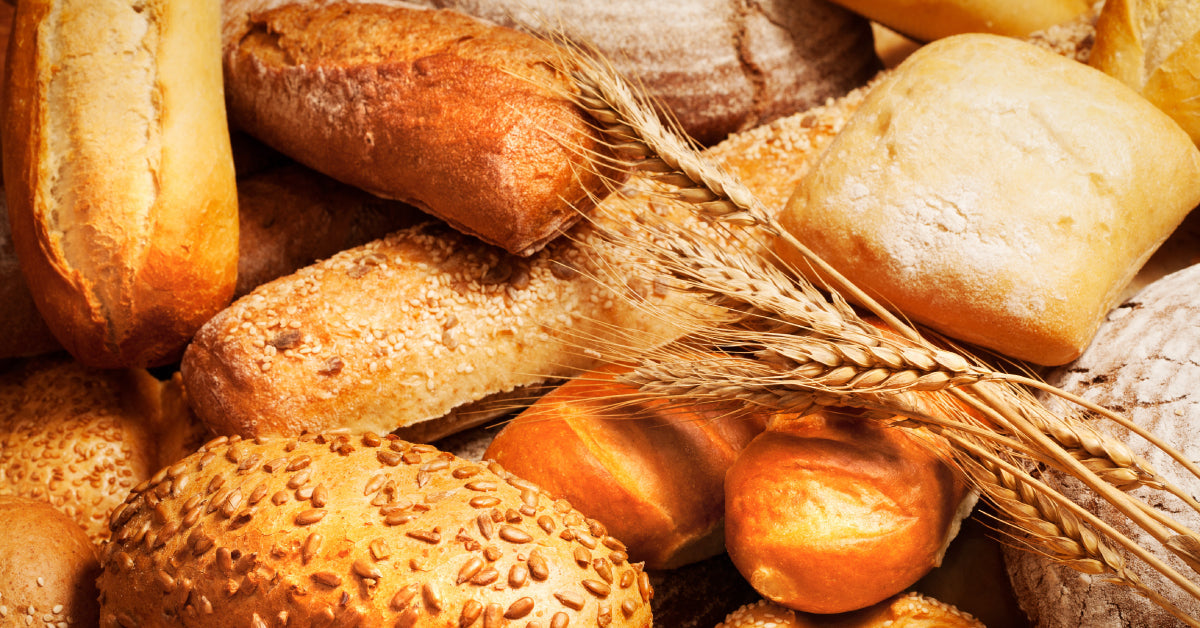
Food – by Freda Coetzee
Choosing The Right Bread For Weight Loss
Nowadays there are a lot of opinions about what you should and should not eat when trying to lose weight. However, there is one thing that everybody seems to agree about, and that is bread. Most diets recommend that you steer clear of white bread when it comes to weight loss, since it is full of refined carbohydrates. While the ideal would probably be to stay away from bread altogether, we know that it is not always that simple. So the next best thing is to make sure that the bread you eat is as healthy as possible. Whole-grain and low GI breads are the way to go for weight loss. Bread and Satiety According to studies, bread is a great way to make you feel fuller after a meal. The studies tested bread against pasta and rice, and found that these two did not lead to the same level of satiety as bread. Calories in Bread Bread per slice is not necessarily high in calories, as it usually contains between 65 and 80 calories in a slice. However, we usually eat more than one slice of bread in a sitting, and thats where the calories start to add up. Whole-Grain bread vs. White Bread Although white bread and whole-grain bread contains roughly the same amount of calories, whole-grain bread is higher in fiber and protein, which helps you feel fuller and also helps with digestion. Furthermore, fiber calories aren't completely absorbed by the body, which means that it can help along your weight loss efforts. Recommended Servings of Bread There is no set amount of grains that you should eat, as everybody is different. The general idea would be to eat about 140 grams of grains if your daily calorie allowance is 1500 calories, and about 110 grams of grains if your daily calorie allowance is 1200 per day. Low GI for the Win If you are on a diet and still want to eat bread, take the Manna Blood Sugar Support Supplement with each meal to reduce the glycemic index (or the speed at which the glucose from the bread is absorbed into the blood stream). This product can also help to curb food cravings and suppress appetite the natural way without any side effects.
Read more
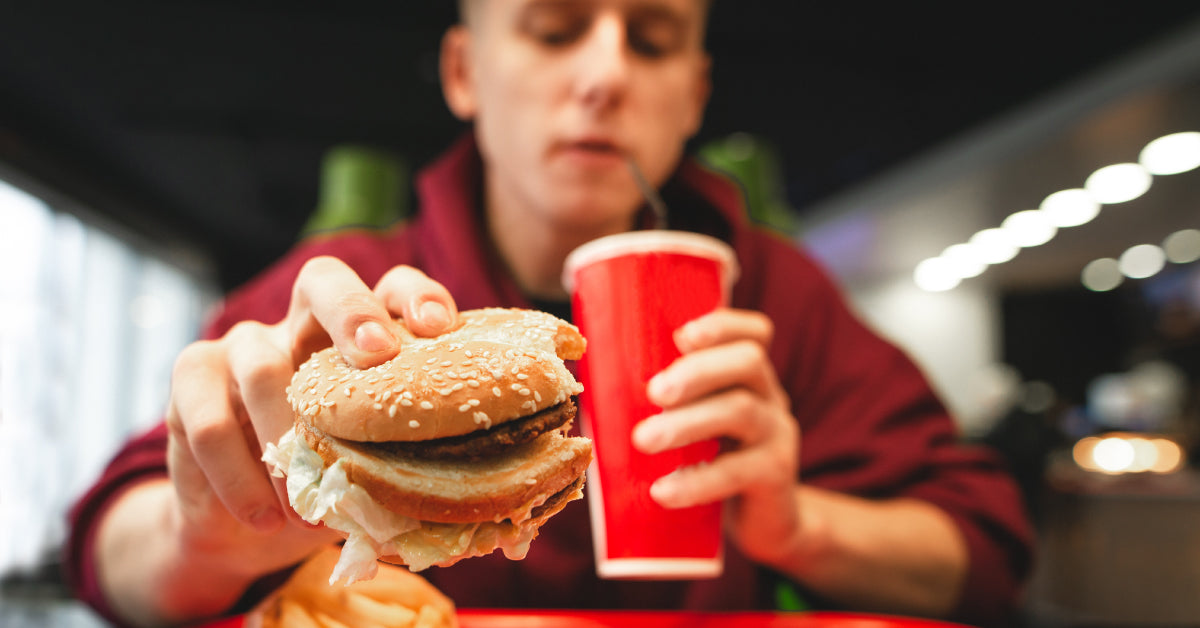
Food – by Freda Coetzee
Fattening Foods To Avoid If You Want To Lose Weight
Summer foods which can derail your weight loss effort Ahhh, it’s summer: barbecues, cocktails at the pool, outdoor sports, and lots of fried chicken, ribs, potato salad, ice cream, hot dogs, and beer. The living may be easy, but you need to know about a few shocking calorie traps and better choices at a backyard barbecue or beach boardwalk. There are fattening foods to avoid if you want to lose weight. Fattening foods to avoid: High-Fat Meats on the Barbecue The bad news: barbecue can sabotage your waistline. A 500g T-bone steak can weigh in at 1,540 calories and 124 g fat. An average cheeseburger has 750 calories and 45 grams of fat. What about pork or beef ribs? They come from the fattiest part of the animal. The good news: You can go lean with cuts like tenderloin, skinless chicken breast, and lean ground beef. Take Me Out to the Ball Game Hot dogs and sausages are treats for many of us, but you might save them for cricket games. It’s not just about fat or calories – after all, you can choose low-fat versions. Most hot dogs, bratwurst, and other sausages are very high in sodium. Mayonnaise-Based Salads A small half-cup portion of typical potato salad has 180 calories and 12 grams of fat; the same amount of coleslaw has about 150 calories and 8 grams of fat. To cut calories, try making your salads with light mayonnaise; or mix mayo with low-fat yogurt, light sour cream, or chicken stock. Or why not try a German-style potato salad, using more vinegar than oil? Then toss lots of veggies into any salad to increase the fiber and nutrients. Frozen Concoctions Sweet, fruity alcoholic drinks (the kind often served with an umbrella) may go down easy, but the calories add up in a hurry. A piña colada can range from 245-490 calories, a daiquiri from 300-800 calories, and a Long Island iced tea can set you back 520 calories or more – with much of it from sugar. Instead of high calorie drinks, try wine, a wine spritzer, or a mixed drink with seltzer and a splash of 100% fruit juice. Satisfying Thirst Quenchers Staying hydrated is essential in summer, but those cold drinks can wreak havoc with your waistline. Be careful what you choose – if you’re drinking 350ml containers of sweet tea, sweetened soda, energy drinks, juice drinks, or beer, you’re probably taking in about 150 calories a pop. Smoothies, milkshakes, and cold coffee concoctions can go much higher. Try water or light versions of your favorite thirst quenchers. Refreshing Frozen Treats A cup of soft-serve ice cream can have 380 calories and 22 grams of fat. Make it a chocolate cookie dough milkshake concoction, and the calories soar to 720, with 28 grams of fat! You don’t need to give up frozen treats, just pass on the giant portions or high fat toppings. Look for frozen desserts like sherbet, fudge bars, fruit bars, or other treats under 150 calories per serving or fruit desserts like strawberry shortcake. Salad Toppers Salads can be the perfect summer dinner: light, refreshing bowls of veggies and lean protein. But high-calorie toppers can push a salad from lean to fattening in a hurry. Fried chicken strips, bacon, cheese, creamy dressings, and croutons are among the worst offenders. Instead, top your greens with grilled chicken, strips of lean meat, or eggs, then pile on the veggies and sprinkle with a light dressing. Mindless Munching on Snacks A handful of any snack won’t do much harm, but too much can sabotage your diet. 28gram of potato chips or cheese puffs is roughly 160 calories and 10 grams of fat. Cheese nachos can contain 692 calories and 38 grams fat. And a 10-cup box of movie theater popcorn can have 550 calories and 31 grams fat. Try snacking on fruits, veggies with light dip, or small portions of fat-free popcorn. Finger-Licking Fried Chicken A bucket of fried chicken is an easy way to feed a crowd, but it can wreak havoc on your waistline and arteries. So forgo fried chicken and toss boneless, skinless chicken breasts on the grill, instead. Marinades and spice rubs add flavor to these quick-cooking cuts of poultry. The nutritional differences are striking.Skinless chicken breast (100g): 167 calories, 7 g fatBreaded, fried chicken breast: 360 calories, 21 g fat Recommendation You need to be alert about what you eat if you want to lose weight and live a healthy life. Read through the free Manna Diet e-book and learn what the best foods are for optimal health.
Read more
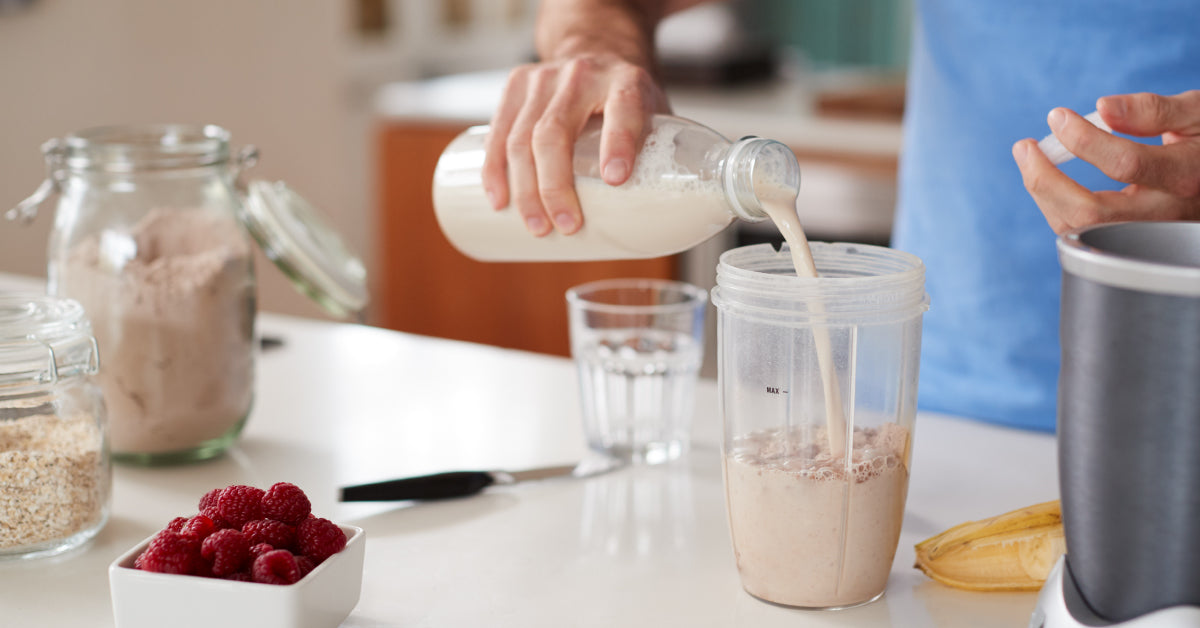
Food – by Freda Coetzee
Difference between Meal Replacement and Protein Shakes
Meal Replacements and Protein Shakes Meal replacements and protein shakes can both support your body composition and athletic performance goals, although they do have significant differences in nutritional profile and benefits. While exact nutritional specifications differ between brands, many products share the same general characteristics, so choosing whether a protein shake or a meal replacement is more appropriate can be somewhat simple. Consult a doctor prior to using any supplements, as they may have unwanted side effects. Calories Meal replacements are intended to be more filling and contain more calories than a protein shake. Although meal replacements are higher in calorie than protein shakes, they tend to be lower in calories than actual meals, which can aid in dieting. Whey protein isolates tend to be the lowest calorie protein shakes, with 101 calories per serving, while others may contain about 120 calories. Meal replacement shakes typically contain between 250 and 400 calories. Protein Content Protein shakes typically provide about 25 g of protein per serving, while the range of protein in meal replacements differs widely. Meal replacements intended for general health may be lower in protein, with 10 g per shake, while those intended for muscle building and dieting may contain up to 40 g. Protein provides muscle-building amino acids, but it may also aid in weight loss; a study from the October 2009 issue of “Nutrition, Metabolism and Cardiovascular Diseases” explains that high-protein diets may help you lose more weight and fat than lower protein meal plans. Carbohydrate Content Protein shakes typically have less than 5 g of carbohydrates, as they are not intended to be full meals. Meal replacement shakes tend to contain carbohydrates to make the nutritional profile more like a real meal. Meal replacements beneficial for dieting will contain dietary fiber, a nutrient that helps in digestion and makes you feel full, helping you consume fewer calories throughout the day. Fat Content Protein shakes are typically low in fat, with 3 g or fewer, while the fat content in meal replacements varies. Meal replacements that are lower in carbohydrates tend to be higher in fat, and may be useful for low-carbohydrate diets. Higher carbohydrate shakes tend to be lower in fat. You may wish to find a meal replacement containing omega-3 fats, as research from the October 2010 edition of the “Journal of the International Society of Sports Nutrition” suggests it may aid in fat loss and muscle gain. Vitamins and Minerals Protein shakes tend not to contain any added vitamins and minerals other than those provided by the protein source. For example, shakes made from whey protein, a dairy product, provide calcium. Although not all meal replacements contain added vitamins and minerals, many do. Manna Low GI Shakes – the Ideal Meal Replacement If you look at the analyses of the Manna Low GI Shake, you will note that it has everything needed to be regarded as an exceptional meal replacement. Take 1 measurement of the Shake with 250ml water or milk (skimmed or full cream) to replace one to two meals per day as part of a healthy weight loss strategy.
Read more
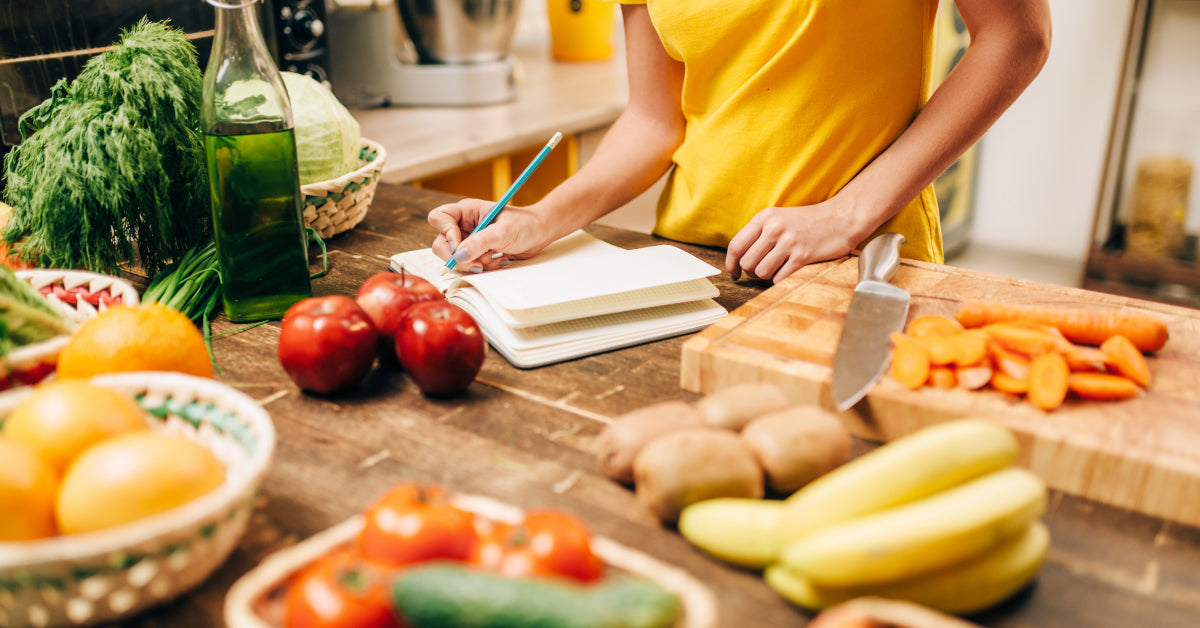
Food – by Freda Coetzee
Eat These 20 Foods to Lose Weight
Are you trying to lose weight but struggling to stay full and satisfied? Look no further than your own kitchen. Incorporating these 20 foods into your diet can help you achieve your weight loss goals while keeping you feeling full and nourished. From protein-packed eggs to fiber-rich oatmeal and nutrient-dense avocados, these foods are not only delicious but also provide essential vitamins and minerals to support your overall health. So, let’s take a closer look at these superfoods and how they can help you achieve sustainable weight loss. Avocado – This fruit is high in healthy fats, which can help keep you feeling full and satisfied. Add slices of avocado to your salad, smoothie or spread it on toast instead of butter. Eggs – Eggs are a great source of protein, which can help keep you full for longer. Scramble or boil them for a quick and easy breakfast, or add them to salads and sandwiches. Oatmeal – Oatmeal is a high-fiber food that can help you feel full and satisfied. Cook it with water or milk and add fruit, nuts, or seeds for added flavor and nutrients. Berries – Berries are low in calories and high in fiber and antioxidants. Add them to smoothies, yogurt, or oatmeal, or simply enjoy them as a snack. Greek Yogurt – Greek yogurt is high in protein and low in fat, making it a great snack or breakfast option. Mix it with fruit or honey for added sweetness. Salmon – Salmon is high in healthy fats and protein, making it a great choice for weight loss. Grill or bake it and serve it with a side of vegetables for a satisfying meal. Quinoa – Quinoa is a great source of protein and fiber, and it’s also gluten-free. Cook it as a side dish or use it as a base for salads. Lentils – Lentils are high in protein and fiber, which can help keep you full and satisfied. Use them in soups, stews, or salads. Green Tea – Green tea is high in antioxidants and can help boost your metabolism. Enjoy it hot or iced, or use it as a base for smoothies. Sweet Potatoes – Sweet potatoes are a great source of fiber and vitamins, and they’re also low in calories. Roast them in the oven or mash them as a side dish. Broccoli – Broccoli is low in calories and high in fiber and nutrients. Steam it, roast it, or add it to salads. Cauliflower – Cauliflower is a great low-carb alternative to rice or potatoes. Use it to make cauliflower rice, pizza crust, or mash it as a side dish. Spinach – Spinach is low in calories and high in nutrients, including iron and calcium. Add it to salads, smoothies, or sauté it as a side dish. Chia Seeds – Chia seeds are high in fiber and healthy fats, which can help keep you full and satisfied. Add them to smoothies, yogurt, or oatmeal. Almonds – Almonds are a great source of healthy fats and protein, which can help keep you full and satisfied. Enjoy them as a snack or add them to salads. Apple Cider Vinegar – Apple cider vinegar has been shown to help with weight loss by increasing feelings of fullness. Use it as a salad dressing or mix it with water and drink it before meals. Tuna – Tuna is a great source of protein and low in calories, making it a great choice for weight loss. Use it in salads or sandwiches. Carrots – Carrots are low in calories and high in fiber and nutrients. Enjoy them raw as a snack or add them to salads and stir-fries. Tomatoes – Tomatoes are low in calories and high in nutrients, including vitamin C and lycopene. Add them to salads, sandwiches, or sauces. Dark chocolate – Dark chocolate contains antioxidants and healthy fats, and studies have shown that it can help reduce appetite and calorie intake. Conclusion Adding these 20 foods to your diet can help you lose weight and improve your overall health. Remember to also incorporate other healthy habits, such as regular exercise and adequate sleep, to achieve the best results. Additionally, it’s important to choose whole, nutrient-dense foods and avoid processed and high-calorie foods. By making small changes to your diet and lifestyle, you can achieve sustainable weight loss and improve your overall well-being. A surprise Superfood to help you lose weight and stay satisfied for longer Prosopis, also known as mesquite, is a superfood that has been used for centuries by indigenous communities in North and South America. One of its key benefits is its ability to help you stay fuller for longer periods of time, making it a great addition to any weight loss diet. This is due to its high fiber and protein content, which slows down digestion and helps regulate blood sugar levels. In turn, this helps prevent cravings and snacking between meals, leading to a reduction in overall calorie intake. Additionally, Prosopis is also rich in essential minerals such as magnesium and potassium, which are important for maintaining healthy muscles and preventing muscle loss during weight loss.
Read more

Food – by Freda Coetzee
Budget-Friendly Low-Carb: Wallet-Slimming Strategies
Don’t let financial strain stand in the way of your weight loss journey. Carbohydrate counting is an eating plan that involves taking note of how many carbs are present in your meals and snacks. The amount of carbs a person should consume to lose weight depends on their individual goals, activity level, and overall health. For men, the recommended daily intake of carbohydrates is 225 to 325 grams per day. For women, the recommended daily intake is slightly lower at 200 to 300 grams per day. While starchy, sugary, and refined foods can be high in fat and empty calories, low-carb choices are healthier and can help with weight loss. But low-carb diets can be painfully expensive. Low-carb foods can be way pricier than sugar-filled delights and fast food. Tips for following a low-carb diet on a budget Choose your protein carefully Eating protein can help with weight loss but meat is pricy. When selecting what type of meat to purchase, you should carefully consider your options. Beef rib eyes can be quite expensive, so you may want to try more budget-friendly cuts like rump or roast. Chicken thighs are typically less expensive than boneless, skinless breasts. Compare prices at different stores in your area and don’t be afraid to try out some new, more affordable cuts. You can also try to incorporate some meatless meals into your diet. Beans and legumes are a great source of plant-based protein that is much more affordable. Eat lots of non-starchy vegetables If you are on a low-carb diet, it can be easy to forget about incorporating vegetables into your meals. To add more variety to your plate, try adding non-starchy vegetables such as cauliflower, squash, and zucchini. You can use cauliflower to make rice or mashed potatoes, and you can use squash and zucchini to make noodles. Best of all, veggies are usually an inexpensive option, making them ideal for those on a tighter budget. Make it yourself Low-carb bread or pasta are pricy items. You might feel elated when you walk into a health shop – there are usually a vast amount of wonderful health products, but your enthusiasm can dwindle quickly if you look at the prices of the items. Luckily there are many low-carb recipes out there for bread, bagels, and other foods. You can make it yourself and save lots. Find recipes that use basic ingredients If you’re looking for low-carb recipes, you may come across recipes that require you to purchase exotic and expensive ingredients. However, if you’re on a budget, it’s important to keep in mind that it is best to look for recipes that use simple ingredients. This way, you don’t have to buy a vast amount of expensive products. Stick to basic ingredients and save money. Shake it up An easy and affordable way to curb your carb intake is to replace meals with a healthy shake. You can use low-carb ingredients and try Manna’s Low GI Shake. This product is a perfect meal in a glass, and can help you to curb food and sugar cravings, suppress appetite and control blood sugar levels. Takeaway A good way to lose weight is to cut down your carb intake but following a low-carb diet can be pricy. Luckily you can cut costs by choosing your sources of protein carefully, filling up your plate with non-starchy veggies, and making your own food by using basic ingredients.
Read more
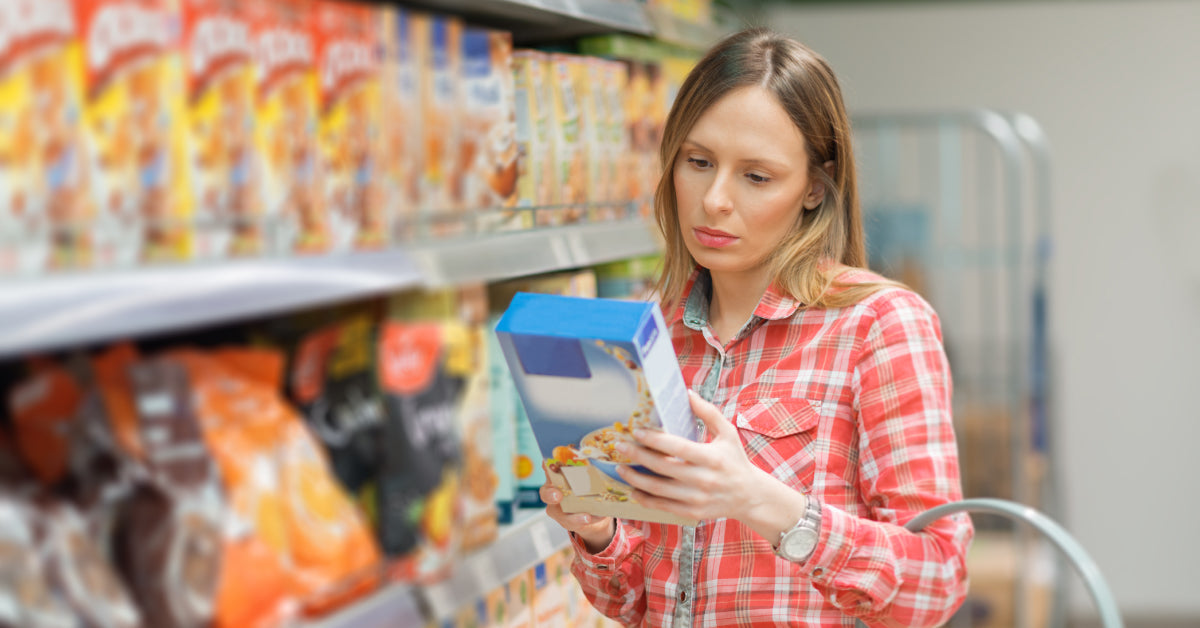
Food – by Freda Coetzee
Decoding Food Labels: Your Key to Weight Loss
Learn how to read food labels so that you can make better weight loss choices. Losing weight is no easy task and shedding those extra kilograms might become even more difficult when you’re eating lots of packaged food, as some packaged products can be deceivingly fattening. A 2018 study noted that only a little bit more than one-third of South Africans indicated that they frequently or always read nutrition information on food labels. The average food and nutrition label knowledge score was 44.4% (fair or below average). Reading food labels can be intimidating. Some products have long lists of ingredients and some of those ingredients can be difficult to read and pronounce. Yet, knowing what you eat can help you make smarter weight loss choices. Here are some tips for reading food labels: Watch out for the serving size Be aware that the suggested serving size may be different from the size of the package. For example, a 500ml bottle of soda might have a suggested serving size of only 250ml, which is half of the package size. The “per serving” column shows how much of each nutrient and energy (in kilojoules) you consume when you eat or drink the suggested serving size. If you drink the entire bottle of soda, you must double the nutritional quantities. The “per 100g” column is useful for quickly comparing similar products since serving sizes can vary. Controlling the amount of energy (kilojoules) you consume each day will help you on your weight loss journey. Look for the following information on a food label The kilojoule count If you are in South Africa, the total energy of a product is displayed as kilojoules (kJ). Keeping a healthy weight relies on the balance between the energy you consume and the energy you expend. If you consume more kJ than your body needs each day, you will likely gain weight. Your daily energy needs are based on factors such as age, activity levels and gender, and a registered dietitian can help you personalize a diet according to your needs. The carbohydrate count The amount of carbohydrates in a food or drink can be found under the heading ‘Glycaemic Carbohydrate’ or ‘Carbohydrate’. This figure reflects the total carbohydrate count, not the Glycaemic Index, and is composed of both sugars (added and naturally occurring) and complex (starchy) carbohydrates. ‘Carbohydrate Of which sugars’ will tell you the amount of sugar the product contains, including added sugar and those that are naturally present in fruit and milk. All added sugars, such as sucrose, glucose, glucose syrup, invert syrup, maltose and honey will be listed in the ingredients list. Ingredients are listed according to weight with the heaviest ingredients being listed first. If added sugars are higher up on the ingredients list, you can be sure that the product will have lots of sugar in it. When it comes to added sugar, it is recommended that you choose products that contain 10g of sugar or less per 100g of product. The protein count A high protein count is good for weight loss. Good sources of protein can aid in weight loss. Good options for protein include lean cuts of meat like chicken, fish (especially ones like mackerel, salmon, and sardines), eggs, beans, soya, pulses, and lentils. Not only can these choices give you a healthy dose of protein, but they also contain less saturated fat and kilojoules than other options. The fat count Consuming fewer fats (particularly saturated fats) can help you maintain a healthy weight. Labels will list the ‘total fat’ content and a breakdown of the types of fats: ‘of which saturated fatty acids’ ‘of which mono-unsaturated fatty acids’ ‘of which trans fatty acids’ ‘of which poly-unsaturated fatty acids’. Most of our daily fat intake should come from unsaturated sources (monounsaturated and polyunsaturated fatty acids). The fibre count Fibre is a type of plant matter that the body cannot digest. There are two types of fibre – soluble and insoluble – both of which offer distinct health benefits. Soluble fibre, found in foods such as beans, oats, fruit and vegetables, helps to form softer stools and regulate blood sugar and cholesterol levels. Insoluble fibre, commonly found in wholegrain cereals and breads, beans, fruit and vegetables, aids in keeping the digestive system healthy and promotes satiety. Fibre is great for weight loss so make sure you choose products with lots of fibre. Takeaway Knowing what to look out for on a food label can help you make healthier choices. Don’t be intimidated by all the long, unpronounceable words on food labels. Choose products with lots of fibre and protein and watch out for those added sugars.
Read more

Food – by Freda Coetzee
Watch Out for Sneaky Sugar
Find added sugar in its hiding place and avoid blood sugar spikes The potential risks of consuming an excessive amount of added sugar are significant. Recent research has connected high sugar consumption to health problems like obesity, type 2 diabetes, and cardiovascular illnesses. Yet, many people are not pouring heaps of sugar on their food. In fact, the biggest part of people’s daily intake of this sweet substance is hidden within pre-packaged and processed food, many of which are promoted as “healthy” options. What it takes to eat healthily To eat well, it is important to have a diet that is abundant in fresh produce, healthy proteins (grass-fed meats, fish, poultry, and legumes), whole grains, and healthy fats. Naturally occurring sugars are also found in these foods and are an important part of a balanced, healthful diet. Yet you also need to increase your knowledge of added sugars to avoid eating too much sugar. Knowing where sugar may be hiding can help you make healthier food choices and beat added sugar at its game of hide and seek. How much added sugar can I eat? The World Health Organization recommends restricting added sugar consumption to less than 10% of daily calories. Sugar has many names The term “sugar” is widely used to refer to a variety of short-chain carbohydrates that naturally produce a sweet flavour. Most people are familiar with sugar in its common forms, such as glucose, fructose, and sucrose, however, there are numerous other forms of sugar that may be less identifiable. To identify added sugars, look at the ingredients list. Some major clues that an ingredient is an added sugar include: It has syrup (examples: corn syrup, rice syrup) The word ends in “ose” (examples: fructose, sucrose, maltose, dextrose) “Sugar” is in the name (examples: raw sugar, cane sugar, brown sugar, confectionary sugar) Four foods with hidden sugar The following foods have surprisingly high amounts of added sugar. 1. Breakfast cereal Before selecting a cereal, it is important to pay attention to the amount of sugar present in it. Even if a product is labelled as “whole grain” or is “fortified with vitamins and minerals,” that doesn’t indicate it is necessarily sugar-free. It is wise to opt for a cereal that has 10–12 grams of sugar or less per serving. Additionally, granola and granola bars should also be checked for added sugars, as these items often contain a sizeable amount. 2. Yogurt Have a look at the nutrition facts label if you enjoy flavoured yogurt. You may be shocked to see how much sugar it contains. To reduce your sugar intake, opt for plain yogurt and add some of your favourite fruit for taste. 3. Non-dairy milk When looking for nutritious and tasty non-dairy milk options, it’s best to purchase the unsweetened variety. While many kinds of non-dairy milk are still considered to be healthy, some contain added sugars to improve the flavour. 4. Condiments If you want to add an extra burst of flavour to your food, be aware that this could lead to an increase in your sugar intake. Items such as ketchup, barbecue sauce, hoisin sauce, and salad dressings often include additional sugars, so it is important to keep that in mind. More tips Watch out for products with many different types of sugar On packaged foods, ingredients are typically displayed in order of weight, with larger quantities being listed first. Some manufacturers exploit this by employing smaller amounts of three or four different kinds of sugar in their products. This way, the product appears to be lower in sugar content, even though it may actually be an important ingredient. Watch out for health claims Many products have claims of being healthy on their packaging that don’t really provide the full story. This includes words like “natural,” “low-fat,” “diet,” and “light” which give the idea of the product being healthy, although they are usually packed with added sugar. To ensure you are selecting products that are healthy, it is important to disregard these claims and take the time to read the label. Watch out for suggested portion size The food industry commonly reduces portion size to deceive consumers into thinking they are eating less sugar than they actually are. For example, a small pizza or bottle of soda could be comprised of multiple servings. The sugar content individually may not be high, but it is easy to consume two or three servings in one sitting. To prevent this from happening, it is important to look closely at the number of servings per container. Takeaway Most people consume more sugar than they need. These excessive amounts of sugar consumption are because of added sugars in packaged products. Be on the lookout for added sugars on food labels. Foods like cereal, yogurt, condiments, and non-dairy milk can be loaded with sugar. By looking out for added sugars, you can make healthier food choices.
Read more
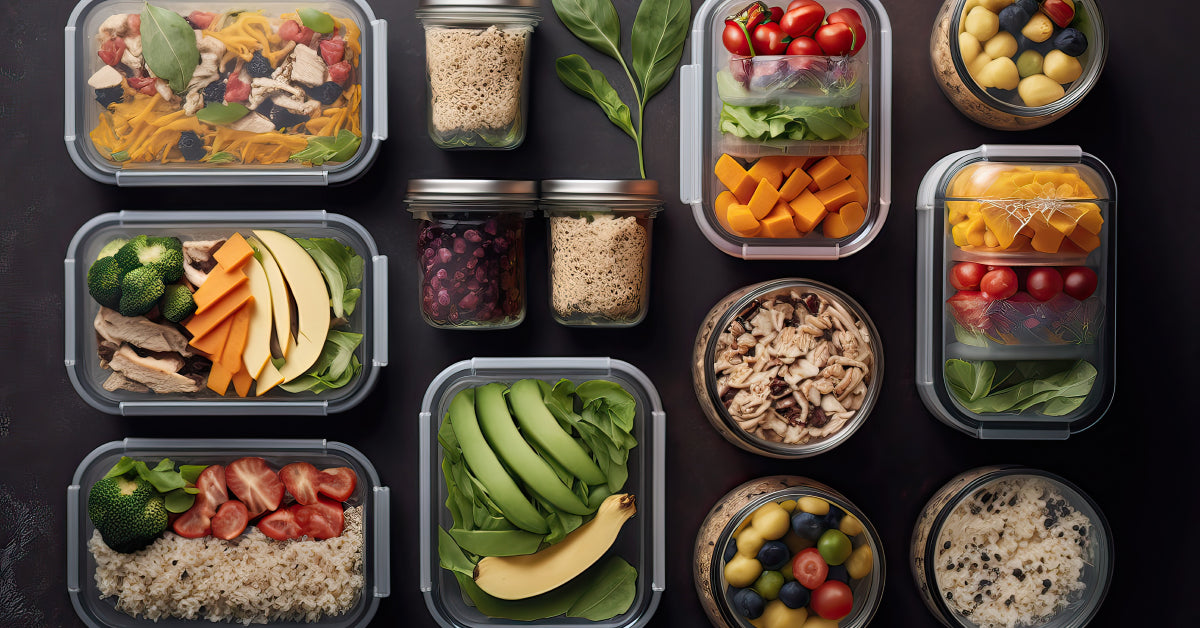
Food – by Freda Coetzee
Practice Portion Control and Lose Weight
Portion control is weight loss made simple If you want to control your weight, you’ll know how crucial it is to follow a healthy, low-carb diet. But eating healthy food is not enough, it is crucial to also have a look at your portion sizes. A good weight loss plan does not just focus on what you eat but also on how much you eat – also known as portion control. Research has shown that a variety of aspects can have an effect on how much food you eat. People are likely to eat all of what they dish out for themselves, so managing portion sizes can be fundamental to avoiding obesity. 5 tips for simplified serving sizes to avoid over-eating: Dish on smaller plates When you set the table, choose smaller plates. Research has determined that plate and glass sizes can have subconscious impacts on how much food you will consume. A vivid example of this is that a large plate can make it seem like the food on it is less than it actually is, causing people to eat more than they actually need. Making the switch to smaller dishes can help to restrict the amount of food you eat, and so reduce unnecessary overeating. Most people feel just as full having eaten from a smaller dish as from a large one. Follow the plate method The plate method is an effective way to divide and control portion sizes of food to help with weight management. It helps to track intake of different foods in a systematic way, ensuring that the correct amounts of food are eaten. A rough guide for each meal is: Vegetables or salad: Half a plate High-quality protein: Quarter of a plate Complex carbs: Quarter of a plate High-fat foods: Half a tablespoon (7 grams) This guide is not set in stone as you have to take into account that people are different and have different dietary needs. It is, however, an easy form of portion control for weight loss. Talk to your dietician about the best eating plan for you. Practice mindful eating Paying attention to how and where you eat, is the practice of mindful eating. People live busy lives and are inclined to eat quickly and on the run. You will be less aware of becoming full when you gobble down your food. It is far more likely that you will eat more food when you are not paying attention to when, where and what you eat. When you curate a good eating environment, you will become more aware of what you eat on a daily basis and enjoy your food more. Techniques for mindful eating include: Sitting down to eat: Pay attention to the food and enjoy the experience. Avoiding distractions while eating: Do not turn on the TV, or a laptop. Eating slowly: Take time to chew and savour the food. This technique helps with weight loss, as it gives a person’s brain enough time to recognize the signals that they are full, which can help to prevent over-eating. Serve your snacks in bowls or plates Eating large portions of food served from jumbo-size packages or large containers encourages overeating and decreased awareness of the proper portion sizes. To avoid this, transfer snacks into smaller bowls so you are more conscious of the portion sizes you are consuming. Many people who are trying to lose weight can testify that this portion control method is very effective. Drink a glass of water before each meal Drinking a glass of water before you eat can reduce hunger and so help you eat less. Being well-hydrated also helps you distinguish between hunger and thirst. If you don’t like drinking water, try flavouring your water with some lemon, lime or other fruits. Takeaway Practicing good portion control can play a big role in your weight loss journey. While following a healthy diet is most definitely beneficial you should also pay attention to how much you eat. Follow these five tips to avoid eating too much.
Read more

Food – by Freda Coetzee
Best Snacks for Weight Loss
Eat healthy snacks and lose weight One of the hardest things, when it comes to weight-loss, is managing how much you eat. If you are a heavy snacker, you can struggle to lose weight. Most of the snacks we eat are incredibly unhealthy and addictive. Of course, you don’t have to completely stop snacking to avoid addiction and weight gain. We all love to nibble on something during the day. The best way to stop eating unhealthy snacks is to substitute them with healthy ones. Should I limit sugar or fat? Indulging in rich, decadent foods like creamy avocados or buttery salmon may seem like an obvious cause of weight gain. The same applies to loading up on sugary cereals and carb-heavy bagels, which can’t be good for your waistline either. However, scientists are now investigating the effects of regularly consuming large amounts of either sugar or fat on their own on our bodies. In many parts of the world, these two ingredients are rarely eaten separately. However, an increasing amount of research suggests that fat alone does not contribute to weight gain, while numerous studies have linked sugar consumption to an increased risk of gaining weight. So, you want to limit snacks with lots of sugar. Some sugar-filled snacks include: Candy bars Cookies Ice cream Donuts Cupcakes While fats may have a bad reputation, including healthy fats in your diet can have numerous health benefits. Some snacks with healthy fats include: Avocado toast topped with olive oil Hummus with whole grain pita chips Mixed nuts, such as almonds and cashews Greek yogurt with a drizzle of honey and sliced almonds Guacamole with veggie sticks for dipping Snacks for weight loss Baked goods When you think of baked goods, you might think of carb-loaded, sugary delights. But you can buy or make healthy baked goods – they can be just as delightful. These treats might be quite expensive to buy at health shops. Baking is a good option if you want to save some money. The two golden rules when it comes to baking healthy treats are: Rule 1: Limit sugar When choosing a recipe, you can always lessen the amount of sugar or switch sugar for another ingredient. Some replacements for sugar include: Honey Stevia Agave nectar Rule 2: Swop flour for healthy alternatives Flour has a lot of carbohydrates and lacks essential nutrients like fibre. Flour can also cause blood sugar spikes and high blood sugar levels can lead to feeling extremely hungry. There are many alternatives for flour, like: Almond flour: Made from finely ground almonds, this flour contains healthy fats, protein, and fibre. It is low in carbs and a good source of vitamin E and magnesium.Coconut flour: Made from the pulp of coconut meat, this flour is high in fiber and low in carbs. It also contains medium-chain triglycerides (MCTs), which are a type of healthy fat that can provide quick energy.Ground flaxseed: This powder is an excellent source of omega-3 fatty acids, fiber, and protein. It can be used as a flour substitute in low-carb baking recipes. Examples of baked goods for weight loss: Avocado brownies with avocado frosting Chickpea-pecan blondies Almond flour banana bread Coconut flour chocolate chip cookies Chocolate peanut butter protein bars Flourless pumpkin spice muffins Fruit snacks Fruit is naturally sweet and great for satisfying a sweet tooth. Fruit is also packed with vitamins, antioxidants and fibre. And of course, they are versatile. You can eat them fresh or you can bake, roast or freeze them. Some examples of fruit snacks: Strawberries dipped in dark chocolate Brown sugar-broiled grapefruit Apple slices with peanut butter Cottage cheese and pears Colliflower pizza with fruit toppings Baked apple crisps with cinnamon Protein-packed snacks Protein is a great weight-loss choice. Eating lots of protein can truly help you lose weight since protein keeps you feeling fuller for longer. Good protein snack choices include: Roasted chickpeas Hard-boiled eggs Biltong or droë wors Almond trail mix (with dried fruit and dark chocolate) Almond and dried apricot rice cakes More tips: Great substitutes for chips include air-popped popcorn or kale crisps.Put your snacks in a bowl instead of eating out of containers. Doing so can help you to not overeat. Practice good portion control.Use your freezer. You can freeze fruit to add in smoothies later or enjoy with yoghurt. You can also freeze baked goods and defrost them for teatime. Takeaway Don’t feel guilty if you like to snack. Be smart about your snacking habits. Substitute addictive, sugary treats with healthier ones. Remember to enjoy your weight-loss journey.
Read more
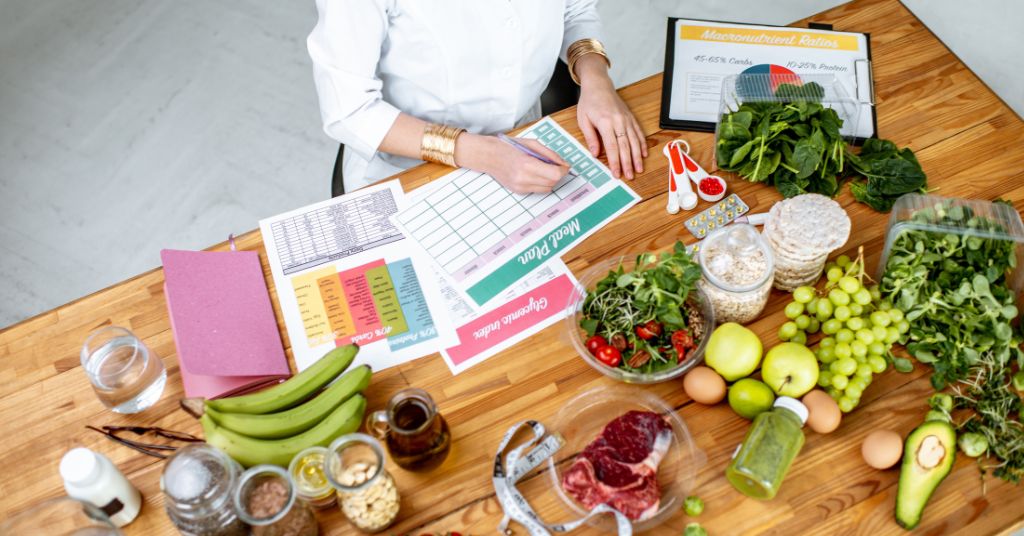
Food – by Pieter-Steyn Coetzee
The Ultimate Guide to Weekly Meal Planning and Prep for Weight Management
In this guide, we’ll walk you through the entire process of meal planning, shopping, and prepping—and we’ll highlight how Manna Health products can be part of your solution for easy, nutritious meals. Plus, you can download our free meal-planning templates to get started today!
Read more
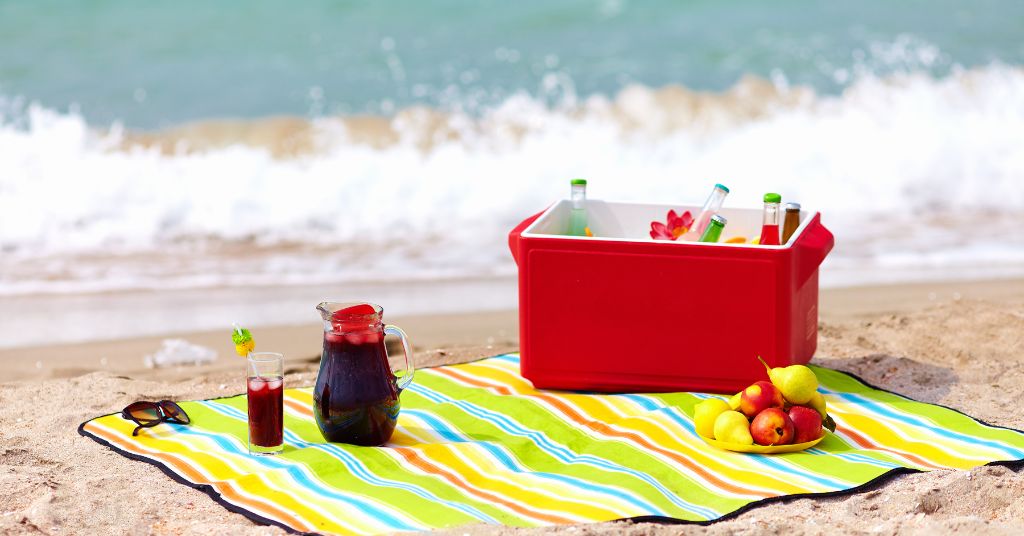
Food – by Pieter-Steyn Coetzee
Find Your Calorie Balance this Festive Season
As we approach the festive season in South Africa, it’s the perfect time to focus on health and weight management. Whether you’re celebrating with family, attending social gatherings, or simply enjoying the holidays, maintaining a healthy weight is essential for overall well-being.
Read more
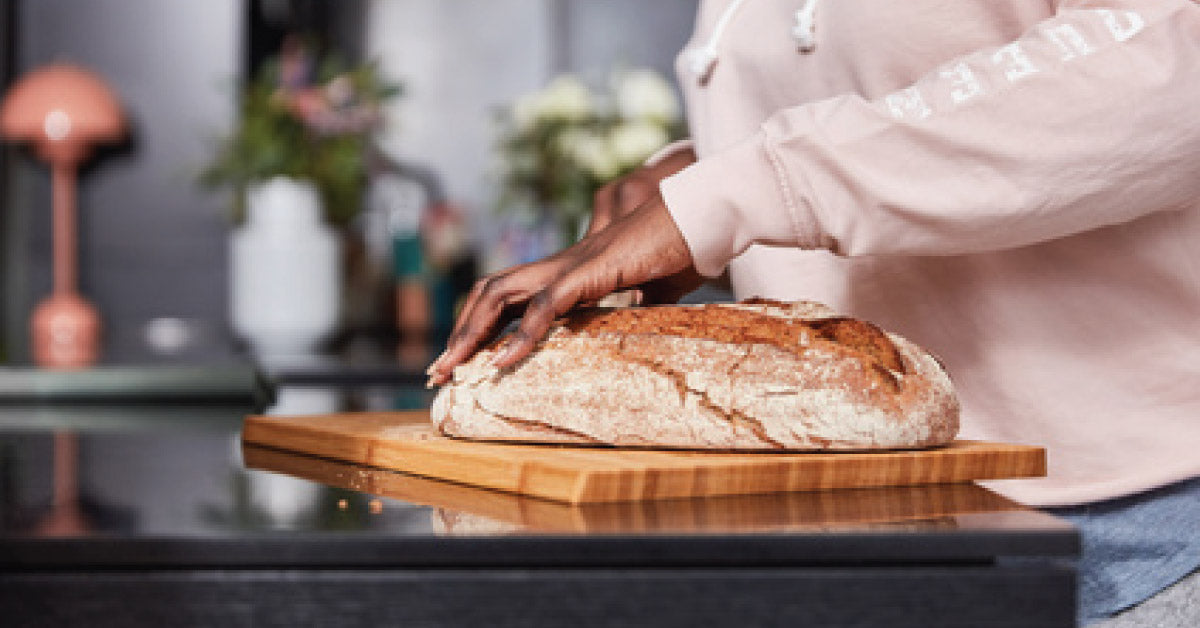
Food – by Freda Coetzee
How to Choose The Right Carbs for Weight Loss
There has been a lot of controversy about carbohydrates and whether or not we should eat carbs for weight loss. Well, the bottom line is that we can actually eat carbs, BUT we have to make sure that we are eating the right carbs for weight loss. We do need carbs seeing that they are the fuel for our body’s energy production system. But in order to only eat the right carbs, we need to know the difference between them and know how to use it to our advantage… What’s the difference between Simple Carbs and Complex Carbs? Simple carbs break down very quickly into sugar, which means that they give you instant high levels of energy. Unfortunately, they also cause your sugar and energy levels to crash just as quickly. Stay away from these carbs! Complex carbs take a lot longer to break down, which means they give you sustained energy over a longer period of time, without the nasty crash at the end. These are the carbs you should be eating! How do I choose the “right” carbs for weight loss? Here are 12 helpful hints for making sure we stick to complex carbs and stay away from simple carbs for weight loss… 1. Read the Label The nutritional label is your friend. It can help you to easily spot any sugar or simple carbs, which usually includes things like: Sucrose Fructose Dextrose Maltose As a rule of thumb, the higher up they appear in the ingredients list, the more added sugar the food has. 2. Avoid ALL simple carbs? While the easy answer would be “yes”, it is not that simple. While most processed foods that contain unhealthy refined carbs can be relatively easy to spot and to exclude from your diet, some healthy foods also contain natural forms of refined sugar. An example of this is the lactose, which is milk sugar, which is found in dairy. 3. Pick Whole-Grain Bread White bread and certain brown bread are filled with refined carbs. Even though many breads claim they are high in fibre and are healthy for you, you should rather opt for whole-grain bread made out of barley, oats, whole wheat, and rye. 4. The Truth About Fruit Yes, fruit does contain simple carbs. But because they contain so much dietary fibre, it balances out. The fibre helps the body process the sugar more slowly, so it does not cause such big sugar spikes. However, you should not eat too many fruits, and also try and stay away from fruit juices as these usually don’t have enough fibre in them to help counter the effect of the sugar. 5. Don’t Forget to Watch What You Drink We often only look at what we eat and neglect the carbs and sugar in the drinks we drink. These can easily add up as they can be jam-packed with refined sugar, and are usually empty calories. Alcoholic beverages are also usually quite high in sugar, as alcohol is, in essence, a form of sugar. When you do go out for drinks, make sure to keep moderation in mind. 6. Autumn Foods Certain foods that are often associated with fall, such as sweet potatoes, pumpkin, and squash, are great sources of complex carbohydrates. 7. Beware of Sweeteners Although you might only put a few teaspoons of sweetener into your coffee or tea, or just sprinkle a light layer of sugar onto your porridge in the morning, these can add up. Brown sugar, maple syrup, molasses, honey, and even things like agave nectar are all sources of simple carbs. 8. Add Some Beans Kidney, white, black, garbanzo, and pinto beans are all good sources of fibre and complex carbs. Other good sources of these are lentils and split peas. 9. Popcorn: A Healthy Treat? Many people assume that popcorn is unhealthy, but the truth is that it is a whole grain and thus a good complex carb. However, make sure it is air-popped popcorn and not those with added salt and fat like you get at the movie theatre. 10. Exotic Grains Who said healthy food has to mean boring food? Try some interesting whole grains like quinoa, millet bulgur, and triticale. 11. The Right Rice Not all rice is unhealthy; in fact, brown rice is classed as a whole grain and is loaded with fibre. White rice, on the other hand, can be very unhealthy as it is a refined carbohydrate. 12. Slow down the Carbs Whatever types of carbs you eat, slowing down the uptake of energy (glucose) from the food to the bloodstream will help you to have more energy for longer and also help to control your blood sugar levels. Take the Manna Blood Sugar Support supplement with each meal, no matter what you eat, because this product will help to slow release the energy of the food and therefore help to curb cravings and suppress appetite. Stop the Cravings with Manna Blood Sugar Support It helps to reverse insulin resistance. Normalize blood sugar levels. Helps to retard the uptake of glucose. Assist the body to require less insulin. Keep your energy level high.
Read more

Food – by Aam Coetzee
10 Foods That Aren't As Healthy As You Think
There are many foods that aren’t healthy at all that are perceived to be healthy. These are foods that aren’t healthy that often contain hidden sugars, or simply aren’t packed with as much nutritional goodness as they promise. Let’s take a look at the top 10 healthy foods that aren’t healthy: Cereal When producing cereal, many of the original vitamins and minerals get destroyed. To compensate, companies add synthetic ingredients to fortify the cereal. But even with this fortification, cereals aren’t as healthy as whole foods. Not to mention most cereals are loaded with sugar to improve the taste. Skim or Low-fat Milk Skim and low-fat milk may have fewer calories, but whole milk has more saturated and monounsaturated fats that have major benefits. These benefits include helping to keep you feeling full, supporting metabolism, and improving your body composition. Without the fat, skim and low-fat milk also have less fat-soluble vitamins like A, D, E, and K when compared to whole milk. Protein bars Many protein bars are not far off from normal candy bars. They’re filled with sugar, high-fructose corn syrup, trans fats, and artificial sweeteners. While the protein content is a good thing, it is usually outweighed by the bad ingredients of these bars.But this does not mean they are all bad; just make sure to read the label carefully before buying one. Sports Drinks These may be thought to be on the healthy side of things because they are designed for sport. But this is not the case whatsoever. While they may contain good things like minerals and electrolytes, they are also jam-packed with sugar and often contain more calories than sugary soft drinks. Whole-Wheat Bread Not all whole-wheat bread contains pure, whole grains. Even the ones labeled multi-grain usually still use refined flour for the most part. Egg-White-Only anything Egg yolks are healthy. Many people say they are not because they contain cholesterol. The truth is, as part of a healthy, balanced diet, eggs wont hurt they will only help. As for the cholesterol: your liver produces more cholesterol per day (about 1-2 grams) than you ingest through your diet. Furthermore, dietary cholesterol doesn't strongly correlate with blood cholesterol Fruit Juices These must be healthy because they are made with fruit, right? Wrong. While the fruit may be healthy when eaten whole, the health benefits quickly disappear when you squeeze out the juice and remove all the fibre. And even though the sugar found in fruit is better than the refined sugar in processed foods, too much of it is also unhealthy. To make matters worse, the bottled fruit juice we buy in the stores usually has added sugar and preservatives to make them taste better and last longer. Fat-Free Foods As you should know by now, fat doesn’t make us fat, sugar does. Fats are important for everything from brain- and metabolic function, to better weight loss. When producing fat-free foods, companies often add trans fats, sugar and artificial sweeteners to get them to taste better, which can lead to weight gain and serious health problems. Most Yogurt Many low-fat and fat-free yoghurts contain loads of sugar, once again to add some flavour and taste. Others use artificial sweeteners, which may also spike your blood sugar and insulin levels. Dried Fruit They are basically just candy with fibre. While it may be better for you than normal sweets, it still contains a lot of sugar and chemicals to improve shelf life. And because its dried, it contains more calories per gram than normal fresh fruit. Why these foods aren’t healthy for me? Because most of them contain sugar and artificial sweeteners, they tend to cause blood sugar levels to fluctuate. When this happens, the body releases more insulin to try and maintain balanced blood sugar levels. When there is so much sugar and insulin in the body, it can have negative effects like weight gain, and also lead to serious health issues like diabetes, kidney problems, and heart problems. Manage blood sugar levels with Manna Blood Sugar Support Take Manna Blood Sugar Support to help control blood sugar levels the natural way without any side effects. You can use Manna Blood Sugar Support in conjunction with any other medication.
Read more

Food – by Marthinus Opperman
Healthier Drinks For Better Weight Loss
When we are trying to be healthier, we usually nit-pick our food very carefully, which is good. But there are healthy drinks for weight loss as well. However, whilst doing this, we often forget to look at what we drink… Since a drink doesn’t really make us feel any fuller, we tend to forget that they can be just as jam-packed with sugar as unhealthy foods, and may easily send our calorie count soaring! Luckily these drinks can be replaced with healthier drinks for weight loss. Here are drinks to replace with healthier drinks for weight loss: Sugary Soft Drinks These are the obvious culprits, and the first to come to mind when talking about unhealthy drinks. I don’t even need to tell you how bad these are, but just to remind you: about 7 teaspoons of sugar in one small can of cola! Rather Drink: Tea Soda. How to Make Basic Tea Soda: Steep 2 tea bags of your favourite tea in 3 cups of boiling water.it chill by putting it in the fridge or freezer.Add 1 cup of sparkling mineral or soda water. There are countless other healthy, homemade recipes to try out online! Fruit Juice You might say that you will just pick freshly squeezed fruit juice instead of the ones with added sugar, right? Well, consider this: An apple only has about 3 teaspoons of sugar in it, but how many apples do you need for a glass of apple juice? 2-3 Apples only give you a medium-sized glass of juice. This way, the sugar quickly adds up! Rather Drink: Lemon Water with some freshly squeezed lemon juice or some bottled lemon juice. Sports Drinks Sports are healthy, so sports drinks are too, right? This cannot be more wrong. Although they claim to have added benefits like vitamins, minerals, and electrolytes – these are all artificial versions created in a laboratory. And the sugar content is just astonishingly high! Rather Drink: Coconut Water. It is a great drink to stay hydrated and keep energy levels up naturally. Flavoured Milk and Milkshakes Although milk itself may be healthy, all the added sugar and ingredients that go into flavoured milk – not to mention the ice cream that goes into milkshakes – make it something to limit to special occasions. Rather Drink: Homemade flavoured milk and milkshakes. Chocolate Milk:Two teaspoons of cocoa powder or cacao nibs melted in a little hot milk. Vanilla Milk:One teaspoon of organic vanilla essence stirred into a glass of milk. Fruity Milkshakes:Use fruits like strawberries or bananas blended with milk to make healthy smoothies.Add a couple of cubes of frozen coconut cream and blend, to get the milkshake effect.Iced Teas and Coffees Stay away from store-bought iced tea and iced coffee, as it is filled to the brim with sugar and preservatives. Rather Drink: Homemade Iced Tea or iced coffee. It is super easy to make, just make your favourite tea in a big jug, add some ice, and sweeten with some honey if needed. The same goes for coffee. How about a healthy meal in a glass? Our Manna Low GI Shake is formulated to allow you to skip a meal without losing the needed nutrients and energy, helping you lose weight in an easy and effective way. It also helps manage your blood sugar levels. The Manna Low GI Shake comprises of 6 ingredients which are high in fiber, protein, and minerals like calcium, magnesium and potassium. Our shake has been proven to help curb food cravings, suppress appetite, and satisfy you for longer. It couldn’t be easier to lose weight. All you do is choose your favourite flavour of Manna Low GI Shake, add it to milk, water or juice, mix it and there you have a healthy meal in a glass. As simple as that! We don’t use any artificial sweeteners or preservatives. The new Shake is gluten-free, lactose-free, Non-GMO, soy-free. Also, the shake is suitable for Vegan’s, Vegetarians and Diabetics.
Read more
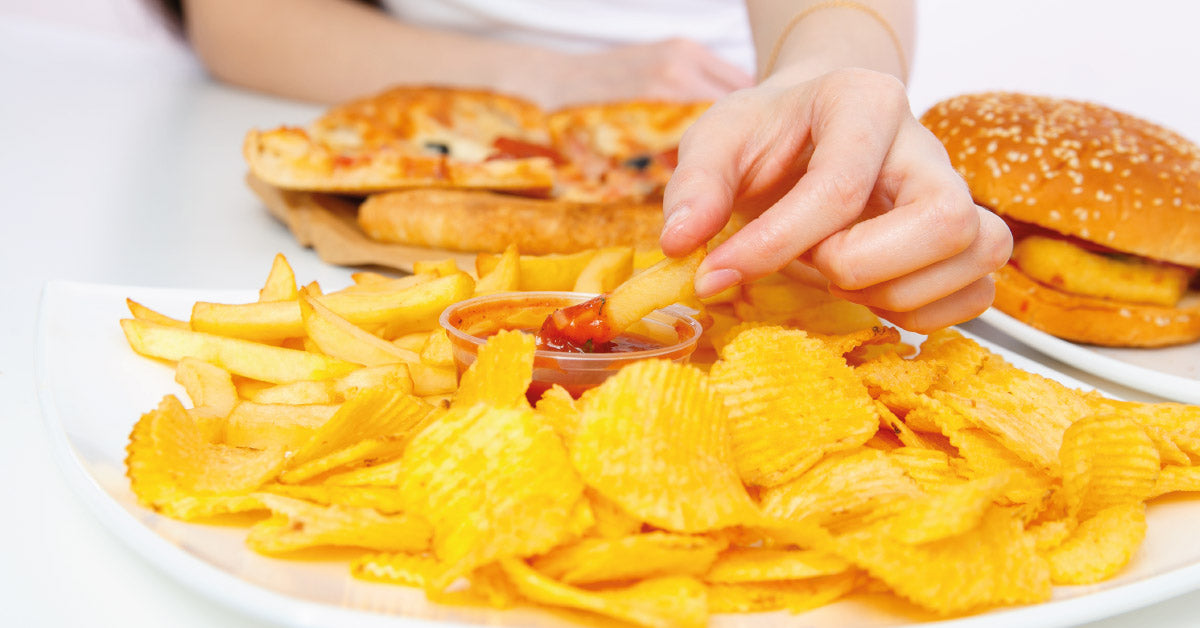
Food – by Freda Coetzee
The Truth about Trans-fats
When on a diet, most people immediately think that they must cut out fat The reasoning behind this is that “fat is what makes you fat”. Unfortunately it is a bit more complicated than that. On the one side the argument is true, but on the other side it is completely false. The reason for this is that there is not only one fat, but many different types. All of these fats affect the body on different ways, and they all play other roles. For instance, there are fats that are really good for us – some might even say they are essential for our survival! These fats include things like essential fatty acids, which help in transporting fat-soluble vitamins like vitamin E, A, and D throughout the body. We also need fats to keep our skin healthy, and our bodies use fat as slow-burning fuel to moderate our blood-sugar levels. What is trans-fat? Trans-fats are unhealthy fats, and these should be avoided as far as possible. These are fats that appear on nutritional labels under names like “hydrogenated vegetable oil” and “partially hydrogenated vegetable oil”. Hydrogenated vegetable oil is created through an industrial process which starts with liquid vegetable oil and adds hydrogen to it. The end product is solid at room temperature, and is used by commercial food manufacturers because it adds an appealing mouth feel to foods such as pie crusts and cookies. Better still, it’s shelf-stable. Unlike more natural fats, it does not turn bad when left unrefrigerated. Foods made with this also have a less greasy feel. This is good for marketing. Why trans-fats are bad: Studies have shown that trans-fats are bad, and they have been linked to heart disease, obesity, type-2 diabetes and systemic inflammation. One study showed that African green monkeys who were fed trans-fats gained weight, and they gained that weight around their middles, even when their diets did not have excess calories. Another study also linked the consumption of trans-fats to type-2 diabetes. The World’s Healthiest Foods website calls trans-fats “unnatural fats” and declares them “detrimental to your health.” The bottom line is: trans-fats are bad. Do not eat them. Recommendation If you struggle with high cholesterol and want to get it down in the most natural way, follow the Manna Diet and take the all-natural Manna Cholesterol Support supplement, which don’t have any side effects.
Read more

Food – by Freda Coetzee
How to Break Bad Eating Habits
The biggest barrier to eating healthy is getting started breaking bad eating habits, and then sticking to a healthy lifestyle The reason for this is often that bad eating habits outshine the good ones. It can be very difficult to break these bad eating habits. But with these 16 Tips, breaking those bad eating habits and slimming down will be a cinch! Eat more fruits and veggies Eat at least one more vegetable or fruit at every meal. Here’s how… Keep cut-up raw veggies in the front of the fridge and fruit on the counter where you’ll see it. Have healthy dips on hand, like hummus, peanut butter, and low-fat yogurt. Load extra veggies into your sandwiches, pizzas, salads, soups, and omelettes. Pureed veggies like butternut squash can thicken the soup and other dishes and add nutrients to them. Mix cauliflower puree in with mashed potatoes. Eat less fast food Try to reduce fast-food temptations completely or to at least choose the healthiest option. Do it like this… Take a different route to avoid seeing drive-through restaurants. Keep fruit or nuts with you to tide you over until you get home or to work. If you can’t resist, choose lower-calorie options like grilled chicken or low-fat chilli, and look for fruit or veggie options like a plain salad as a side. Order regular or small sizes, and avoid value meals. Sip water instead of sugar cool drinks or fruit juices. Snack healthier Snacks are good for you, as long as they are healthy ones. Here are some ideas for healthy snacks… Instead of reaching for cookies or chips, enjoy a small handful of nuts or trail mix, or low-fat yogurt. Take advantage of fresh fruit in season. Citrus fruits like oranges are especially good because they take time to peel and eat. Eat pretzels or a few whole-wheat crackers with low-fat cheese. Only snack when you’re really hungry – not just bored or stressed – and only eat one serving. Eat out less Plan every day so your only option isn’t a restaurant. Let’s see how you can dine-in with ease… Use a slow cooker so a hot, healthy meal is ready and waiting for you when you come home at dinner time. Cook more than you need, and freeze half. Then you’ll have frozen meals you can take out whenever you need them. You can even make easy-to-fix healthy breakfasts – like oatmeal with fruit – for lunch or dinner. Avoid mindless eating Eat only when you’re actually hungry. To stop mindless eating… When you feel satisfied, but before you feel full, stop eating – even if there’s still food on your plate! Don’t sit in front of the TV or computer when you eat. Multitasking leads to overeating. Pay attention to your food. When you tune in to your appetite signals, you’re less likely to eat just because you’re bored. Snack less at work Get unhealthy snacks out of your office – or at least out of plain sight. If you want to avoid snacking at your desk… You’ll eat less if you don’t have food within easy reach. If you tend to graze mindlessly at work, don’t keep food at your desk. Keep it at least 6 feet away from where you sit. The distance makes you think each time you grab a bite. Take time for a real lunch break, away from your desk. Eat smart at restaurants Just like eating at home, planning can help you make smarter choices in restaurants. Plan your dine-out experience… Find one that serves a children’s menu or smaller portion sizes. Don’t let yourself get so hungry that you overeat. Have a healthy snack beforehand. Start with a clear (not creamy) soup or salad. Cut your meal in half and take one-half home. Or split an entrée with a friend. Ask the waiter not to bring any bread to your table. Drink less sugar We often forget to count the drinks we drink intro our calorie intake. Give up one sugary drink a day… Cutting just one can of regular cola means losing more than 30 grams of sugar – or about 8 teaspoons – from your diet. Replace cool drinks and other sugary drinks with water or unsweetened tea. Eat breakfast every day If you’re too rushed in the morning to make breakfast, take it with you to eat at school or work. Portable breakfast items can include granola or breakfast bars, containers of yogurt, instant oatmeal packets, or pieces of fresh fruit. Even if you don’t like typical breakfast foods, it’s important to eat something in the morning to get the metabolism going. You can also take the Manna Low GI Shake as a meal replacement in the morning. The difference between meal replacement and protein shakes… Plan to eat right Don’t give up on healthy eating just because you’re out of time. Have a healthy-eating plan in place for days when you work late or have errands to run. You can be prepared for healthy eating by starting with… Keep nutritious snacks with you, like trail mix, whole grain cereal, or fruit. Keep healthy foods in your freezer. Learn which restaurants and supermarket delis have salad, soup, or grilled chicken so if you have to eat “to go,” you can make healthy choices. Eat smart at parties Eat a healthy snack before you go, so you won’t overeat at the buffet. And when you get there… Fill a small plate with at least half fruit and veggies. Limit your portions of desserts and high-calorie dishes to just a taste – a bite or two.Once you’ve eaten, step away from the food. If you have a conversation around the buffet table, it’s too tempting to just keep snacking.Drinks can be high in calories, too. Whether you’re drinking alcohol or cool drinks, use moderation.Keep track of what I eat Keep a food journal to pay attention to what you eat and how you feel when you eat it. You may be surprised by your eating habits. You can write down your meals or download an app for your smartphone or tablet. You don’t have to track your meals every day. Just track it one day a week or for a few days to get an idea of what and how you eat. Learn to say “No” Stay strong when it comes to healthy eating. The waiter might tell you that you can’t have sauce on the side. Your coworker might pressure you to try her homemade treats. But remember that every bite adds up, so it’s important not to give in over and over! Explain why you’re saying no if you want to – or just politely decline. You don’t owe people an explanation, but you owe yourself good health. How not to overeat Think small. Trade your large plates and silverware for small ones. You can extend this method of eating by… Use a tablespoon, not a serving spoon, to dish out portions. Think about what you put on your plate to make sure you really want it. Serve from the stove instead of the table, so second helpings aren’t right in front of you. Eat slowly so your body has time to tell your brain you’re full. Find support to eat healthily It’s easier to be strong when you have family or friends on your side. Ask a buddy or family member to eat healthy with you. Hold each other accountable. Don’t make healthy meals or snacks just for yourself but let your family eat what they want. Everyone should eat healthily. Then if someone is tempted to slip, the whole team is there for support. Use technology to download an app or find a website that will keep you on track. Balance your blood sugar levels Possibly the best way to break bad eating habits is by ensuring your blood sugar levels stay balanced. Follow the Manna Diet. It lends itself to a low-carb roadmap that can help you eliminate the bad carbs and sugar from your diet and beat the cravings. Add to this a good exercise routine, and taking 1 or 2 Manna Blood Sugar Support tablets with each meal, and you have yourself a winning recipe to take control of your blood sugar levels!
Read more
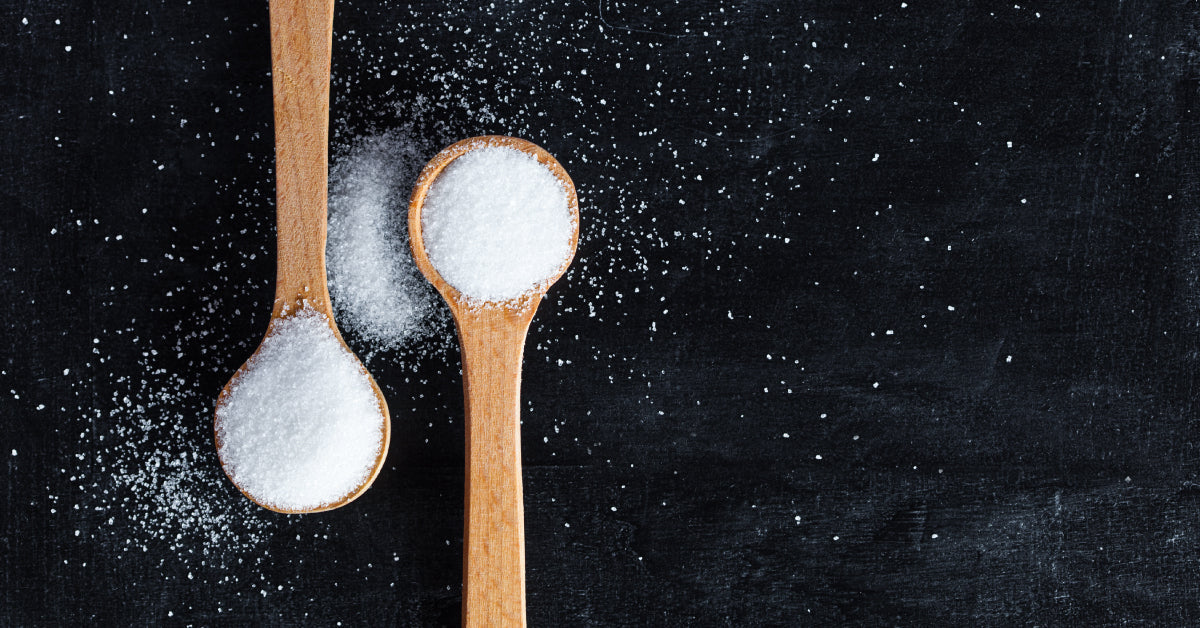
Food – by Freda Coetzee
9 Simple Tips to Kick the Sugar Habit
Can we really be addicted to sugar? Maybe not, but many of us just can’t say no to it, and have a sugar habit. How do we know that we should cut back on the sweet stuff? A sugar habit is relative. Some people consume WAY more than they should. While others eat only a little bit, but do this every single day. Some things to look out for are: Sugar cravings, either during the day or at night when you are bored.Losing control and eating more than you planned.Constantly trying to self-justify when you eat something sweet. When it comes to sugar, you can never be too careful. Whether you have a serious problem with sugar habits, or you just feel that you could maybe cut back just a smidge. Here are 9 simple tips to help you with your sugar habit… Take Baby Steps It is a lot easier to cut back on sugar if you do it a little bit at a time. Depriving your body of all sugar at once might actually lead to more sugar cravings than before. Start by cutting out a small amount of sugar each week, until you have reached a point where you are consuming little to no sugar. Also start drinking more water, and eating more fruits and veggies. Just because it isn’t sweet, doesn’t mean it isn’t Sugar. If you think that this article doesn’t apply to you because you don’t have much of a sweet tooth, think again. Just because something does not actually taste sweet, does not mean that it is sugar-free. Look at things like potato chips, bagels, or French fries. These do not taste sweet, but yet they are jam-packed with carbs which are in essence the same thing as sugars. Other such foods to watch out for are white rice, white flour, potatoes, white bread, pretzels, crackers, and pasta. Retrain Your Taste Buds Just because you have become accustomed to taking in a certain amount of sugar, does not mean that you need to take in this much sugar. By gradually reducing the amount of sugar you take in, you can retrain your taste buds to perceive less-sweet things as more than sweet enough. Opt for Healthier Sweets Just because you are cutting down sugar, does not mean that you can’t have something sweet. Healthy alternatives are everywhere with things like fresh berries, frozen fruit, dried fruit, or yogurt, to name but a few. Turn to Protein for Help Since protein doesn’t cause such drastic spikes and drops in the blood sugar levels, it can help your body from craving a sugary pick-me-up treat. Good sources of protein are lean chicken, low-fat yogurt, beans, eggs, nuts and seeds. Fill Up on Fiber Fiber is great for keeping away sugar cravings in many ways. Fiber can make you stay fuller for longer, which helps with all kinds of cravings. Food that is high in fiber also generally gives you more energy without raising the blood sugar levels too much. To get enough healthy fiber; eat fruits, veggies, and whole grains. Get Up and Active Exercise is always a great way to help when it comes to weight loss or bettering your health. It helps you feel better, more energized, and it promotes the body’s cravings for healthy food. It is recommended that you get at least 30 minutes of exercise, at 5 times per week. Be careful Of Artificial Sweeteners Studies have suggested that sugar-free artificial sweeteners can actually do more harm than good. It generally does not help you break your cravings for sweets, and you might actually end up wanting the real deal. Don’t Overdo it On the Healthy Sugars Either Things like honey, brown sugar, and cane juice may be deemed healthier than normal sugar, but sugar is sugar. They do not necessarily cause less of a spike in your blood sugar levels, but they tend to contain more nutrients so their calories are more easily justified than the empty calories from refined sugar. How Much Sugar Is Too Much? The daily recommended sugar limit is: 6 teaspoons for women (About 100 calories.)9 teaspoons for men (About 150 calories.) NOTE: Sugar by Any Other Name You don’t always see the word “sugar” on a food label. It sometimes goes by another name, like these: Agave nectar Brown rice syrup High-fructose corn syrup Dextrose Evaporated cane juice Glucose Lactose Malt syrup Molasses Sucrose Watch out for items that list any form of sugar in the first few ingredients, or have more than 4 total grams of sugar. Recommendation If you struggle to control your sugar habit or sweet craving, the good bacteria in your gut might have been damaged by the use of antibiotics, high stress levels or any other chronic medication. The “bad” bacteria thrive on sugar and therefore the craving. You can rectify this problem by reinstating the good bacteria with a very good probiotic, like the Manna GUT Support supplement, which contain all the necessary probiotics, colostrum and digestive enzymes to help with a complete restoration process. You can also follow the Manna Diet, which eliminates all sugar and starches. The Manna Blood Sugar Support supplement can be taken with each meal to control blood sugar, suppress appetite and control cravings and sugar habits. This product can also help to prevent type 2 diabetes.
Read more

Food – by Freda Coetzee
Reducing Sugar Intake for Weight Loss?
Using sugar intake for weight loss is something that countless people all over the world are trying to achieve on various different levels. People try vastly different techniques in order to try shake off the extra kg’s which range from crash-diets to eating nothing but soup for 3 months. There is no diet that is a sure-fire way of losing weight for every person on earth, as all people are different and lose weight differently. However, one thing that seems to help along most people is cutting back on sugar. This does not mean that you have to remove all the sugar and carbs from your diet, but by significantly decreasing your sugar intake you may just give yourself the needed boost to reach your goal weight. Here are 5 steps to reduce sugar intake for weight loss: Step 1: Read the Label Reading food labels for sugar content is a great way to keep track of how much sugar-trouble you are getting yourself into with each snack. Be careful of foods that contain added sugars like sweetener, malt, sucrose, maltose, dextrose, or corn syrup. Step 2: Reduce Your Sugar Consumption Gradually Reducing sugar in your foods and drinks slowly gives your taste buds chance to get used to less sweet food. Step 3: Cut Out Soft Drinks It does not help if we look at every gram of sugar in our food, but drink a can of soft drink without even blinking. Soft drinks are filled to the brim with sugar and can be very dangerous to you and your diet. Step 4: Swop Cereal for Porridge Porridge made from oats is a much better option that boxed cereal which often contains loads of added sugar and usually has a much lower nutritional value. Step 5: Pack a Healthy Snack Make sure that you always have a low-sugar, low-calorie snack with you when you are on the go or at the office so that you have something to give you an energy boost when you start craving sugar. Recommendation: Snack on dried fruits, such as dates, raisins and prunes, to satisfy sweet cravings. Try a salty snack, such as a pickle or pretzels, when you want sweets, as this can often curb the desire. Curb sugar and food cravings by taking the Manna Blood Sugar Support supplement with each meal.
Read more
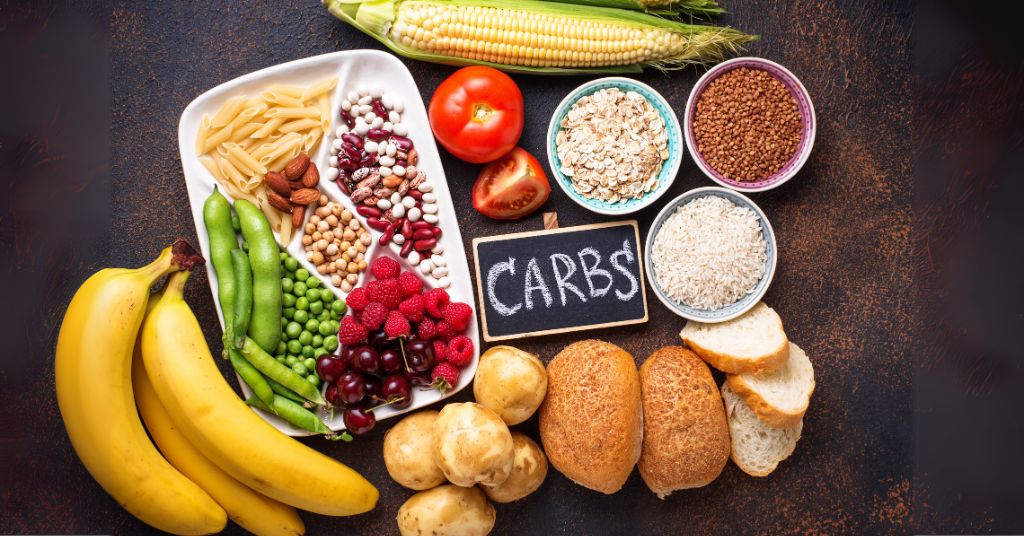
Food – by Pieter-Steyn Coetzee
What Are Carbohydrates?
How to Choose the Best Carbs for a Low-GI Diet When it comes to managing weight effectively, carbohydrates often get a bad reputation. But the truth is, not all carbs are created equal! Understanding how to choose the right carbs and portion them correctly can make a huge difference in your weight loss journey. What Are Carbohydrates?
Read more

Food – by Freda Coetzee
Basic tomato sauce
Basic Tomato SauceA classic, versatile sauce made by simmering ripe tomatoes with garlic, onion, olive oil, and herbs. Rich, smooth, and full of flavor—perfect as a base for pasta dishes, pizzas, and stews.
Read more

Food – by Freda Coetzee
Beetroot hummus
Beetroot HummusA vibrant twist on classic hummus, combining chickpeas with roasted or boiled beetroot, tahini, garlic, lemon juice, and olive oil. Creamy, earthy, and slightly sweet—perfect as a dip, spread, or colourful side.
Read more

Food – by Freda Coetzee
Healthy Summer Breakfast
Healthy Summer Breakfast: A light and refreshing start to the day with options like Greek yogurt topped with fresh berries, chia seeds, and a drizzle of honey, or a smoothie bowl with blended fruits and granola.
Read more









